Global Engagement: Hong Kong's Invitation for Web3 Insights

Table of Contents
The Hong Kong Legislative Council is currently engaged in soliciting feedback on various crucial facets of Web3 policy development. This includes ensuring a balanced approach to technical aspects, legal considerations, and regulatory frameworks. Johnny NG Kit-Chong, a member of the Legislative Council, underscores the significance of gathering insights from the global industry to inform policy recommendations and thematic discussions concerning the future direction of Web3 and the virtual asset industry.
To advance these objectives, the Legislative Council has established a dedicated subcommittee focused on fostering the development of Web3 technologies and virtual assets within Hong Kong. This initiative aims to position Hong Kong as a proactive hub for innovation in the evolving digital economy.
Hong Kong's Vision for Web3 and Virtual Assets
The Hong Kong Legislative Council has embarked on a comprehensive initiative to shape its policy and regulatory landscape concerning Web3 and virtual assets, with the aim of positioning Hong Kong as a leading global hub for innovation in these domains. This initiative involves a meticulous process where proposals are thoroughly studied, summarized, and subsequently presented to the government via the Legislative Council platform.
The overarching goal is to establish a cohesive environment that effectively supports the technical intricacies and legal frameworks of Web3 technologies, while ensuring robust and transparent regulations.
Key aspects of Web3 policy development under scrutiny include the delicate balance between technical innovation, legal compliance, and regulatory oversight. The Legislative Council is actively seeking feedback on these critical dimensions to foster an environment conducive to innovation while maintaining regulatory clarity.
Furthermore, there is a strong emphasis on enhancing international cooperation to bolster Hong Kong’s stature as a globally interconnected hub for Web3 initiatives. This includes exploring synergies between artificial intelligence (AI) and Web3 technologies to advance regulatory frameworks for AI in conjunction with Web3 advancements.
Another focal point is the promotion of Decentralized Autonomous Organizations (DAOs) and strategies to cultivate talent in Web3 technology and financial innovation. The Legislative Council recognizes the transformative potential of DAOs and aims to develop policies that support their healthy growth within Hong Kong’s regulatory framework.
In parallel, the Legislative Council is addressing the burgeoning virtual asset industry, seeking measures to foster its development in Hong Kong while safeguarding investor and consumer interests. Efforts are underway to enhance protections, boost market confidence, and ensure the security of virtual asset investors and consumers. This includes evaluating stablecoins to understand their benefits and risks and formulating regulatory frameworks that balance financial stability with innovation.
Additionally, recognizing the increasing demand for professional custody services for virtual assets, the Legislative Council is devising corresponding regulatory measures to meet this need effectively.
Overall, Hong Kong’s approach to Web3 and virtual assets underscores its commitment to fostering innovation while upholding regulatory integrity and investor protection. By actively soliciting feedback and studying comprehensive policy measures, the Legislative Council aims to solidify Hong Kong’s position as a forward-looking hub for Web3 technologies and a trusted jurisdiction for virtual asset innovation and investment.
Driving Growth: Hong Kong's Role in the Virtual Asset Industry
In July 2023, the Hong Kong government took a proactive step towards fostering the development of Web3 technologies by establishing a dedicated task force. This task force, consisting of 15 industry participants and 11 key government officials, was specifically formed to oversee and guide the ethical growth of Web3 within the region. The initiative aimed to leverage Hong Kong’s strategic position as a global financial hub to facilitate innovation in blockchain technology and virtual assets.
However, despite these efforts, there has been a notable decline in the number of cryptocurrency exchanges seeking operational licenses in Hong Kong. This trend was highlighted by the recent withdrawals of applications from crypto exchanges IBTCEX and QuanXLab, both of which had initially filed their applications in February 2024. The decision to withdraw these applications underscores challenges within the regulatory environment and may reflect uncertainties or evolving regulatory expectations within the cryptocurrency sector in Hong Kong.
The formation of the task force signaled Hong Kong’s commitment to creating a supportive regulatory framework for emerging technologies like Web3 while ensuring ethical standards and investor protection. The government’s intent was to encourage responsible innovation and provide clarity to industry players navigating the complex regulatory landscape.
Despite setbacks such as the withdrawal of operational license applications by crypto exchanges, Hong Kong continues to explore avenues to enhance its attractiveness as a hub for blockchain and virtual asset activities, balancing innovation with regulatory certainty and investor confidence.
Michael Saylor's MicroStrategy Purchases Additional 11.9K Bitcoin for $786 Million

Michael Saylor’s MicroStrategy, a Nasdaq-listed software company and the largest corporate holder of Bitcoin, has made headlines once again with its latest acquisition of 11,931 BTC for $786 million. This strategic move was announced through a Thursday morning press release and continues the company’s aggressive investment in Bitcoin, led by its Executive Chairman, Michael Saylor.
As of the end of April, MicroStrategy held 214,400 bitcoins. This latest purchase brings the total to 226,331 bitcoins, which, at the current price of approximately $66,000 per Bitcoin, are worth just shy of $15 billion. This monumental sum underscores the significant position MicroStrategy has established within the cryptocurrency market. To put this into perspective, the company’s bitcoins were acquired at an average price of $36,798 each, amounting to a total expenditure of roughly $8.33 billion.
The recent purchase follows a substantial $800 million convertible note offering to institutional investors. Initially planned to be a $500 million offering, the size was increased to $700 million and ultimately closed at $800 million due to strong demand. This strategy mirrors a similar debt issuance in March, where the company raised funds to purchase 9,245 BTC for $623 million.
MicroStrategy’s journey into Bitcoin began in 2020 when Michael Saylor and the company started accumulating the cryptocurrency. Since then, Saylor has been a vocal advocate for Bitcoin, promoting it as a reserve asset for corporate treasuries. His efforts aim to inspire other companies to follow suit, integrating Bitcoin into their financial strategies.
While MicroStrategy leads the charge, other companies are beginning to explore similar paths. Notably, Semler Scientific (SMLR), a U.S.-listed company, has recently added Bitcoin to its balance sheet in a significant way. Over the past three weeks, Semler has not only invested in Bitcoin but has also looked to raise capital from the markets to increase its holdings, much like MicroStrategy.
The impact of these strategic investments on MicroStrategy’s stock has been remarkable. Since the company began its Bitcoin purchases four years ago, its shares have risen approximately ten-fold. This surge reflects investor confidence in the company’s long-term vision and its bold embrace of Bitcoin as a key asset. Similarly, Semler Scientific has seen a more than 60% increase in its share price since disclosing its Bitcoin investments in late May.
The financial market’s response to MicroStrategy’s Bitcoin strategy has been positive, with brokerage firm Bernstein recently initiating coverage of the company. Bernstein set a price target of $2,890 for MicroStrategy’s shares, giving them an outperform rating. This optimistic outlook is reinforced by the company’s current premarket trading value, which has risen 2% to $1,507.
MicroStrategy’s ongoing commitment to Bitcoin and its ability to raise significant capital to fund these purchases is a testament to the growing institutional acceptance of cryptocurrency. The company’s strategy highlights the evolving role of Bitcoin in corporate finance and the potential for other companies to adopt similar approaches.
The broader implications of MicroStrategy’s Bitcoin investments are multifaceted. On one hand, the company’s large-scale adoption of Bitcoin as a reserve asset could encourage other corporations to consider diversifying their treasuries with cryptocurrencies. This shift could lead to increased stability and mainstream acceptance of Bitcoin, potentially driving its value higher as demand grows.
Michael Saylor’s Vision: Bitcoin as the Future of Corporate Treasury Assets:
On the other hand, this strategy is not without risks. Bitcoin’s price volatility poses a challenge, as significant fluctuations can impact the value of the holdings and, consequently, the company’s financial position. However, Michael Saylor’s steadfast belief in Bitcoin’s long-term potential suggests that MicroStrategy is prepared to weather short-term volatility for the promise of long-term gains.
MicroStrategy’s bold foray into Bitcoin is also a reflection of Michael Saylor’s personal conviction in the digital currency. Saylor has frequently expressed his belief that Bitcoin is superior to traditional reserve assets like gold. He argues that Bitcoin’s decentralized nature, finite supply, and increasing adoption make it an ideal store of value in the digital age.
The company’s actions have certainly brought attention to Bitcoin’s potential as a corporate treasury asset. By leveraging debt to fund Bitcoin purchases, MicroStrategy has created a blueprint that other companies might follow. This approach not only increases the company’s Bitcoin holdings but also amplifies its influence in the cryptocurrency market.
As MicroStrategy continues to acquire Bitcoin, the dynamics of the corporate world’s relationship with cryptocurrency are likely to evolve. The company’s significant Bitcoin holdings make it a major player in the market, capable of influencing trends and potentially driving broader adoption among corporations.
Looking ahead, MicroStrategy’s strategy may serve as a catalyst for further institutional investment in Bitcoin. If other companies begin to adopt similar strategies, the demand for Bitcoin could see substantial growth, further solidifying its position in the financial ecosystem.
In conclusion, MicroStrategy’s acquisition of 11,931 more Bitcoins for $786 million marks another significant milestone in the company’s ongoing investment strategy. With total holdings now at 226,331 Bitcoins, the company’s commitment to Bitcoin as a reserve asset is clear. This strategy has not only boosted MicroStrategy’s stock performance but also positioned it at the forefront of the corporate adoption of cryptocurrency. As Michael Saylor continues to champion Bitcoin, the potential for broader acceptance and integration of digital assets in corporate treasuries remains a compelling narrative in the evolving landscape of global finance.
Binance Pays Rs 18.82 Cr Fine to Re-enter Indian Market

Binance Fined Rs 18.82 Crore to Resume Operations in India: A Regulatory Saga Unfolds
New Delhi, June 20 (IANS) – Binance, a leading global blockchain and cryptocurrency platform, has been mandated to pay a fine of Rs 18.82 crore to restart its operations in India. This penalty was imposed by the Financial Intelligence Unit (FIU) for allegedly breaching domestic anti-money laundering regulations while operating in the country.
The FIU’s notification on Thursday stated, “After considering the written and oral submissions of Binance, the Director, FIU-IND, based on the material available on record, found that the charges against Binance were substantiated.”
In addition to the financial penalty, the FIU has issued specific directives to Binance to ensure strict compliance with the obligations outlined in Chapter IV of the Prevention of Money Laundering Act (PMLA) of 2002, in conjunction with the PMLA Maintenance of Record Rules (PMLA Rules) of 2005. These measures aim to prevent money laundering activities and combat the financing of terrorism (AMLCFT).
Background and Legal Proceedings
Binance had recently registered with the FIU in May as part of its efforts to resume operations in India. This move came after the financial watchdog issued a show-cause notice in December 2023, along with eight other offshore exchanges that were found operating in violation of local regulatory norms.
The enforcement action against Binance was a result of its failure to comply with the regulatory framework in India, which led to its prohibition from conducting operations in the country. This regulatory crackdown targeted offshore cryptocurrency exchanges operating without proper registration, aiming to bring them under the purview of Indian laws.
In contrast, rival cryptocurrency exchange KuCoin managed to resume full operations after paying a fine of Rs 34.5 lakh and completing the necessary registration process. The divergent outcomes highlight the varying degrees of compliance and regulatory scrutiny faced by different cryptocurrency platforms operating in India.
Binance's Compliance Efforts and Regulatory Response
Following the issuance of the show-cause notice, Binance engaged in extensive discussions with regulatory authorities and submitted detailed responses to address the allegations leveled against it. Despite these efforts, the FIU’s decision to impose a substantial fine underscores the severity of the violations detected during the investigation.
The directives issued by the FIU not only mandate the payment of the fine but also emphasize the importance of comprehensive compliance with anti-money laundering and counter-terrorism financing regulations. Binance is now required to implement robust measures to ensure the proper maintenance of records and adherence to all statutory obligations under Indian law.
Implications for the Cryptocurrency Industry in India
The regulatory actions against Binance and other cryptocurrency exchanges operating in India signal a pivotal moment for the digital asset industry in the country. With the growing popularity of cryptocurrencies and blockchain technology, regulatory authorities are intensifying their efforts to establish a clear regulatory framework that balances innovation with consumer protection and financial integrity.
For Binance, the path to resuming operations in India hinges on its ability to fully satisfy the FIU’s compliance requirements and demonstrate a commitment to upholding the highest standards of regulatory compliance. The cryptocurrency exchange sector, meanwhile, faces heightened scrutiny and the imperative to align with evolving regulatory expectations.
In conclusion, Binance’s payment of a Rs 18.82 crore fine to restart operations in India marks a significant development in the ongoing regulatory landscape surrounding cryptocurrencies. The FIU’s decision underscores the importance of compliance with anti-money laundering regulations and signals a firm stance against non-compliance by cryptocurrency platforms operating within Indian jurisdiction.
As Binance navigates through this regulatory hurdle, its compliance efforts will serve as a crucial benchmark for other cryptocurrency exchanges seeking to operate in India. The evolving regulatory environment necessitates continuous adaptation and adherence to regulatory frameworks aimed at fostering a secure and transparent digital asset ecosystem.
Ultimately, the resolution of Binance’s regulatory challenges in India will shape the future trajectory of the cryptocurrency industry in one of the world’s largest economies, influencing both market participants and regulatory authorities alike in their approach towards digital innovation and financial oversight.
Telegram's TapSwap: A Comprehensive Guide to the Tap-to-Earn Game and Airdrop

If you’re familiar with Notcoin or Hamster Kombat, you’ll quickly grasp TapSwap, a new viral tap-to-earn game. Announced for launch on The Open Network (TON), TapSwap brings a fresh and exciting twist to the Telegram gaming scene. Like its predecessors, it promises engaging gameplay where players earn rewards by simply tapping. With its unique features and integration with TON, TapSwap is set to capture the interest of gamers and crypto enthusiasts alike. Stay tuned for more details on how to join the fun and maximize your earnings in this innovative game!
According to The Open Network (TON), TapSwap has already garnered over 50 million users, many eagerly awaiting the upcoming airdrop. TapSwap, one of the latest tap-to-earn games to hit Telegram, is designed to engage players by offering crypto rewards through simple gameplay. If you’ve enjoyed games like Notcoin or Hamster Kombat, you’ll find TapSwap easy to understand and exciting to play.
The premise of TapSwap is straightforward: players tap their screens to achieve various in-game objectives, earning rewards in the form of cryptocurrency. This innovative model not only provides entertainment but also introduces an opportunity to accumulate crypto assets effortlessly. With its growing user base and seamless integration with TON, TapSwap is quickly becoming a favorite among Telegram gamers.
As the game continues to gain traction, the anticipation around its airdrop is building. This airdrop promises to reward early adopters and active players, further boosting the game’s popularity and user engagement. Whether you’re a seasoned gamer or new to the tap-to-earn concept, TapSwap offers a unique and rewarding experience.
Stay tuned for more details on how to participate in the TapSwap airdrop and maximize your earnings. With its vibrant community and potential for crypto rewards, TapSwap is set to become a standout game on the Telegram platform. Dive in now and start tapping your way to crypto rewards!
What is TapSwap?
TapSwap has quickly become one of the most talked-about new games in the tap-to-earn category, a genre that has seen significant growth following Notcoin’s record-breaking airdrop, the largest ever in gaming history. This event set a high benchmark and sparked a wave of interest in similar games. Soon after, Hamster Kombat emerged and managed to surpass Notcoin in total player count, demonstrating that the enthusiasm for tap-to-earn games remains strong.
TapSwap’s launch is the latest development in this vibrant gaming niche. The game has captured the attention of the gaming community on Telegram, offering players another exciting opportunity to earn cryptocurrency simply by tapping their screens. TapSwap builds on the success of its predecessors, promising engaging gameplay and rewarding experiences for its users.
With its integration into The Open Network (TON), TapSwap leverages blockchain technology to provide a secure and transparent platform for players. This not only enhances the gaming experience but also adds an element of trust and legitimacy to the rewards system. As the game continues to attract new players, the anticipation for its upcoming airdrop grows, promising additional incentives for early adopters and active participants.
The continued rise of games like TapSwap, Notcoin, and Hamster Kombat underscores the sustained appetite for tap-to-earn mechanics. These games are not only fun but also provide a unique way for players to earn digital assets. Whether you’re new to the genre or a seasoned tap-to-earn gamer, TapSwap offers an exciting and potentially lucrative gaming experience. Stay tuned for more details on how to get involved and take advantage of the upcoming airdrop, as TapSwap cements its place in the evolving world of tap-to-earn games.
Despite its recent announcement of launching a token on The Open Network (TON), TapSwap has already achieved remarkable growth. Its Telegram channel has surged in popularity, becoming the second-largest in the tap-to-earn gaming community, trailing only behind Hamster Kombat. Impressively, TapSwap’s channel boasts more than twice the membership of Notcoin’s official announcements channel.
This rapid expansion highlights the game’s strong appeal and the community’s
enthusiastic reception, setting the stage for a promising future as it prepares for its token launch.
Steps to play TapSwap :
At its core, TapSwap shares a similar premise with Notcoin before its historic airdrop. Players access the game through a Telegram mini app available on both iOS and Android, integrating seamlessly within the messaging platform. The gameplay revolves around tapping a gold coin at the center of the screen to earn points. However, the tapping action is limited by an “Energy” bar, which dictates how long you can play before needing to take a break and wait for the bar to refill.
This mechanic encourages strategic tapping and timed engagement, adding a layer of excitement and anticipation to the game. TapSwap’s familiar yet engaging setup promises to captivate both new players and fans of tap-to-earn games, offering a straightforward yet rewarding experience within the popular Telegram ecosystem.
In addition to its core tapping mechanic, TapSwap introduces several avenues for players to enhance their experience and earn rewards. Beyond tapping the central gold coin, players can complete special tasks to earn bonus points. These tasks include actions like joining TapSwap’s social media communities or registering for a Binance exchange account, which requires Know Your Customer (KYC) verification. By fulfilling these tasks, players not only accrue bonus points but also contribute to the game’s community engagement and growth.
Referring friends is another way for players to boost their earnings in TapSwap. When players refer friends to join the game, they receive an initial burst of coins. Furthermore, players continue to earn additional coins based on the in-game activity of the friends they refer. This referral system not only incentivizes player recruitment but also fosters a network effect that enhances the game’s user base and interaction.
Moreover, TapSwap incorporates boosts to augment players’ tapping abilities and maximize their coin accumulation. Each day, players receive three free boosters: “Tapping Guru” and “Full Tank.” The “Tapping Guru” booster increases the number of points earned per tap, making each tap more rewarding. On the other hand, the “Full Tank” booster refills the energy bar instantly, allowing players to resume tapping without delay. These boosts provide strategic advantages, enabling players to optimize their gameplay sessions and maximize their coin earnings.
Overall, TapSwap’s blend of straightforward tapping mechanics, engaging tasks for bonus points, a robust referral system, and strategic boosts makes it an attractive choice for enthusiasts of tap-to-earn games. The game not only offers a simple yet rewarding gameplay experience within the Telegram platform but also encourages active participation and community involvement through its various features and incentives. As TapSwap continues to evolve, it remains poised to captivate and reward players seeking both entertainment and crypto rewards in a dynamic gaming environment.
TapSwap offers premium boosts that players can purchase with earned coins. These boosts include Multitap, which increases coins earned per tap; Energy Limit, expanding the energy bar’s capacity permanently; and Recharging Speed, accelerating the energy bar refill rate. These boosts enhance gameplay efficiency and rewards, catering to players seeking to optimize their TapSwap experience.
There’s a Tap Bot in TapSwap that earns points passively, even when you’re not playing. Simply claim your haul every 12 hours to keep earning.
Airdrop Date?
TapSwap has confirmed an upcoming airdrop with a focus on distributing TapSwap Tokens (TAPS) among players. Initially integrated with a Solana wallet, TapSwap’s decision to release tokens on TON aligns with industry trends seen in Notcoin and Hamster Kombat. The team announced TapSwap Pools for May 30, but due to bot activities targeting airdrop points, the launch was postponed to July 1. These pools will allow users to exchange earned coins for TAPS tokens, central to the airdrop strategy.
Ethereum ETFs Could Shift on July 2nd, Gensler Eyes Summer Launch
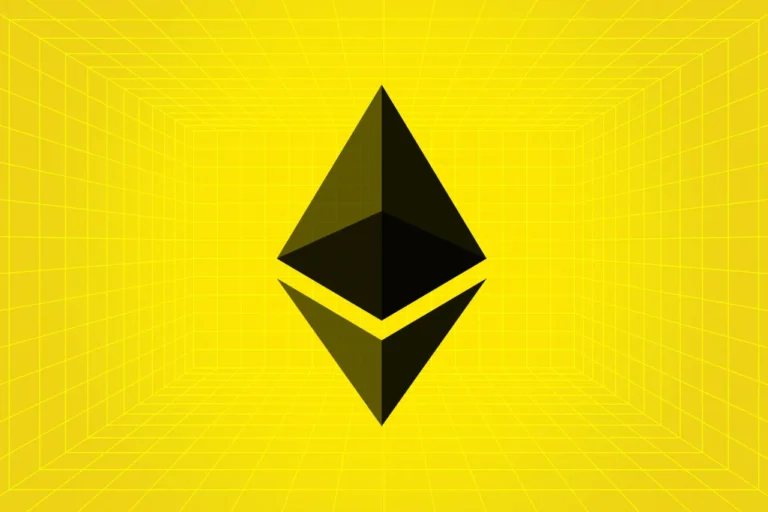
According to top analysts, the awaited announcement for Ethereum ETFs’ final approval might come as soon as July 2, just before the Independence Day weekend. This development holds profound importance, not only for cryptocurrency investors but also for the broader financial landscape. The green light for these ETFs could signify a pivotal move towards validating digital assets, unlocking fresh avenues for investment, and hastening the widespread acceptance of cryptocurrencies.
This anticipated decision could catalyze a significant surge in institutional interest, potentially reshaping how financial markets engage with blockchain technologies. It stands to redefine the investment landscape by integrating digital assets more deeply into traditional financial frameworks, potentially paving the way for broader regulatory acceptance.
Decoding the Implications of Ethereum ETF Approval
The SEC is poised to potentially approve Ethereum ETFs by July 2, according to leading experts such as Eric Balchunas from Bloomberg. SEC Chairman Gary Gensler recently indicated progress towards approving S-1 forms for ETFs on major altcoins “by this summer.” This development reflects significant steps taken by the SEC to enable the listing and trading of eight Ethereum ETFs, which include necessary rule changes.
However, the finalization of detailed S-1 registration forms outlining these financial products is still pending before their official launch. The SEC’s request in May for issuers to update these forms suggests a swift advancement in the approval process.
Ethereum ETF Approval: A Crypto Landscape Shift
Nate Geraci, an ETF analyst, echoes this optimism, emphasizing that the final steps preceding approval are crucial, yet all indicators suggest the SEC is prepared to proceed. He notes that only minor adjustments remain before final approval, signaling a positive development for the cryptocurrency market.
The approval of Ethereum ETFs holds significant implications for both institutional and individual investors. By facilitating access to Ethereum through regulated financial products, this decision not only enhances the credibility of cryptocurrencies but also has the potential to attract substantial capital inflows. Increased liquidity could contribute to market stability and mitigate volatility, thereby broadening the appeal of cryptocurrencies to a wider audience.
Looking ahead, this approval could serve as a catalyst for further regulatory initiatives favoring cryptocurrencies on a global scale. Regulatory bodies in other jurisdictions are closely observing the SEC’s actions, and a favorable decision could spur similar measures elsewhere. This alignment could accelerate the worldwide adoption of digital assets, fueled by heightened investor confidence and ongoing advancements within the sector.
Enhance your Cointribune experience with our ‘Read to Earn’ program! Accumulate points for each article read and gain access to exclusive rewards. Join now to maximize your benefits.
Insights from Gary Gensler: Decrypting Crypto Queries

Gary Gensler, the Chairman of the U.S. Securities and Exchange Commission (SEC), testified before the U.S. Senate Appropriations Subcommittee on Financial Services on June 13 as part of the review of the President’s Fiscal Year 2025 budget requests for the SEC and the Commodity Futures Trading Commission (CFTC).
During the hearing, Gensler addressed questions related to cryptocurrency and the approval of spot Ethereum exchange-traded funds (ETFs). Senator Bill Hagerty (R-TN) queried why the SEC has not fully approved spot Ether ETFs, especially in light of a recent court ruling that deemed the SEC’s grounds for disapproving spot Bitcoin ETFs unwarranted.
“We actually, as an agency, did approve ethereum exchange-traded products,” Gensler told Hagerty. However, the lawmaker interjected, noting that the approval was only partial. Gensler insisted that the SEC approved the “filings that were in front of us from stock exchanges,” adding, “I think there were eight or nine of them.” Gensler continued:
In May, the SEC took a significant regulatory step by approving 19b-4 filings for eight spot Ether ETFs. However, for these ETFs to launch, the agency still needs to finalize the S-1 (registration statement) filings.
Senator Hagerty questioned Gensler about the potential full approval of spot Ethereum ETFs this summer. Gensler responded, emphasizing that decisions at the staff level primarily involve disclosure and registration. He highlighted the importance of ensuring that the registration statements are comprehensive and compliant before they can be declared effective. This underscores the procedural steps essential for the approval process to move forward.
Telegram's TON Blockchain Surpasses Ethereum as 'Hamster Kombat' Hits 150M Players, Offering Free Coin Mining

Throughout this month, Telegram’s “The Open Network” (TON) blockchain has consistently outperformed Ethereum in terms of daily active addresses.
Delphi Digital, a prominent firm, recently highlighted TON’s impressive growth in a post on X. They noted that TON’s daily active addresses have surpassed Ethereum’s, attributing this success to Telegram’s enormous user base of 900 million.
Calling it “The Flippening CT ignores,” Delphi Digital emphasized that TON’s success hinges on Telegram’s extensive reach. However, they also raised questions about whether this growth can be sustained long enough to keep TON ahead of Ethereum permanently.
TON and Ethereum Neck and Neck in Active Address Count
Data from Artemis, which defines daily active addresses (DAA) as the number of unique wallets engaging in transactions on a blockchain each day, shows that TON and Ethereum have been closely competing since May 17.
TON gained an edge at the beginning of June, surpassing Ethereum on 10 out of the first 11 days of the month.
On June 3, TON set a record with 568,300 DAAs, a level Ethereum hasn’t reached since September 13, 2023. Despite these impressive figures, it’s essential to consider the broader context. Ethereum has been actively pushing transactions to layer 2 scaling solutions, which have attracted significant user activity, making direct comparisons somewhat unfair.For example, on June 11 alone, three of Ethereum’s top layer 2 solutions—Arbitrum, Base, and Optimism—had a combined 1.3 million daily active addresses.
Ethereum co-founder Vitalik Buterin has been a strong advocate for using layer 2 solutions to scale the main blockchain, as part of Ethereum’s roadmap.TON’s recent surge in network activity can be attributed to several factors, including the integration of Tether (USDT) stablecoin on TON and the 35 million users who have joined Notcoin since its launch five months ago.
Notcoin is a “tap-to-earn” token that users can earn by completing various social challenges. Additionally, Telegram introduced Telegram Stars, an in-app currency for digital purchases, on June 6.Telegram’s messaging platform has also become a popular hub for crypto enthusiasts, with trading bots gaining significant traction among users.
Telegram Adds Digital Payments to Enhance User Experience
Last week, Telegram rolled out a new digital payment feature named “Telegram Stars,” allowing users to conduct in-app purchases conveniently. This feature is compatible with both iOS and Android platforms, aimed at enhancing user engagement and monetization within the Telegram ecosystem.
The introduction of Telegram Stars coincides with the platform’s burgeoning mini apps, which continue to attract a significant influx of users daily.One of the most notable mini apps gaining traction on Telegram is Hamster Kombat, a simulator game where players can increase their earnings by acquiring “upgrade cards” and completing various quests.
Earlier this month, Hamster Kombat achieved a milestone by amassing millions of subscribers, solidifying its status as the leading channel on Telegram in terms of user base.In recent developments, Pixelverse, a Web3 gaming ecosystem integrated within Telegram, successfully completed a funding round, securing $5.5 million in investment.
The funding round witnessed participation from prominent investors in the crypto and Web3 gaming sectors, including Delphi Ventures, Merit Circle, and Mechanism Capital.
This influx of capital underscores growing investor confidence in Telegram’s potential as a platform for innovative gaming and digital experiences.
Overall, these initiatives underscore Telegram’s strategic expansion into digital payments and gaming, leveraging its robust user base and ecosystem to foster new avenues of interaction and monetization.
Guide to Mining Hamster Kombat Coins: Earn Up to ₹50,000 Worth for Free

What is Hamster Kombat?
Hamster Kombat is a click-to-earn game where players accumulate NOTCoin virtual coins through various in-game activities. The game revolves around earning coins per hour, allowing players to progress to higher levels and unlock new challenges and rewards as their balance increases. It offers an engaging experience with opportunities to explore different gameplay strategies while aiming to maximize earnings.
What is Hamster Kombat?
Hamster Kombat is a click-to-earn game where players accumulate NOTCoin virtual coins through various in-game activities. The game revolves around earning coins per hour, allowing players to progress to higher levels and unlock new challenges and rewards as their balance increases. It offers an engaging experience with opportunities to explore different gameplay strategies while aiming to maximize earnings.

Step-by-step instructions to get started with Hamster Kombat :
1.Open the Telegram app on your device.
2.Access the Hamster Kombat Bot by clicking on this link: https://t.me/hamster_kombat_boT/start?startapp=kentId1890907155
3.Begin Playing: Once you access the bot, follow the prompts to start the game.
4.Collect Coins: Tap on your screen to collect and gather coins as you play.
Spot Ethereum ETFs: Bloomberg Analyst Sees Trading Start by July

Bloomberg ETF analyst Eric Balchunas has revised his prediction, suggesting that spot Ether ETFs could start trading in the United States by July 2. In a post on X dated June 15, Balchunas mentioned that the U.S. Securities and Exchange Commission (SEC) had provided minimal feedback on the ETF applicants’ S-1 forms, requiring them to resubmit within the week.
“We are moving up our over/under date for the launch of spot Ether ETF to July 2nd,” Balchunas wrote. He added that there’s a “decent chance” the SEC will work to declare the ETFs effective the following week to clear them off their agenda before the July 4 holiday.
Balchunas noted that the SEC’s comments were “pretty light, nothing major,” which led to the revised prediction. He explained that this was his “best guess as of now,” indicating a turnaround in confidence from the previous day. On that day, he had mentioned that Ether ETF applicants were still awaiting feedback from the Division of Corporation Finance, a division of the SEC responsible for overseeing firm disclosures.
Initially, Balchunas was contemplating pushing back his prediction of a July 4 launch due to the pending feedback. However, the recent developments and the light nature of the SEC’s comments have led him to adjust his expectations to an earlier date.
In conclusion, Balchunas now believes that the launch of spot Ether ETFs in the U.S. is likely to occur before July 2, provided the SEC finalizes the applications promptly. This potential early launch is seen as a way for the SEC to address these applications ahead of the Independence Day holiday.
On May 23, the SEC approved eight 19b-4 filings to list spot Ether ETFs on various U.S. exchanges. However, these ETFs cannot commence trading until they receive the necessary approvals for their S-1 registration statements.
Demand for Ethereum Climbs as ETF Launch Nears
Recent on-chain data reveals a significant uptick in demand for Ethereum, driven primarily by permanent investors. This trend is highlighted by a marked increase in CryptoQuant’s Permanent Holders Inflows metric. These permanent holders, often referred to as “hodlers,” are investors who tend to hold onto their cryptocurrency assets for extended periods, weathering market volatility without easily liquidating their positions.
On Wednesday, June 12, these long-term investors collectively acquired 298,000 BTC, underscoring their growing interest and confidence in the market. The term “permanent holders” describes participants who have a high tolerance for market fluctuations and are committed to maintaining their positions over time.
CryptoQuant’s data suggests that this surge in acquisition is not merely a coincidence but a calculated move by institutional investors. These institutions are likely positioning themselves strategically in anticipation of the upcoming launch of Ethereum spot ETFs. The imminent availability of these ETFs is seen as a potential catalyst for significant market activity and investment opportunities.
The behavior of these permanent holders indicates a strong belief in Ethereum’s long-term value and potential. Their increased activity reflects a broader trend of accumulating assets ahead of key market events, such as the ETF launch. Institutions, with their substantial financial resources and market influence, are probably leading this charge, preparing to capitalize on the expected rise in Ethereum’s value once the ETFs become available.
This strategic positioning by institutional investors highlights the growing acceptance and integration of Ethereum into mainstream financial markets. As the launch date for the Ethereum spot ETFs approaches, the market is likely to see further increases in demand and investment from both individual and institutional investors.
In summary, the latest on-chain data points to a rising demand for Ethereum, particularly from long-term, resilient investors known as permanent holders. This trend is driven by a strategic accumulation of assets, likely by institutions, ahead of the anticipated launch of Ethereum spot ETFs. This development underscores the growing confidence in Ethereum’s future prospects and its increasing integration into the broader financial ecosystem.
High Court's Landmark Decision: Crypto Trading Legal in India

Crypto Dealing 'Not Illegal' Says High Court
The primary legal question before the Indian High Court was whether activities related to cryptocurrency dealings could be considered offenses under two specific acts: the Prize Chits and Money Circulation Schemes (Banning) Act and the Odisha Protection of Interests of Depositors Act (OPID). This question arose amid growing concerns and regulatory scrutiny over the nature and legality of cryptocurrency investments in India.
Justice Sasikanta Mishra presided over the case as part of a single-judge bench. His ruling addressed these concerns head-on, providing much-needed clarity on the legal standing of cryptocurrencies within the framework of Indian law. Justice Mishra’s decision hinged on the interpretation of key terms within the two acts in question.
He began by examining the Prize Chits and Money Circulation Schemes (Banning) Act, which primarily targets fraudulent financial schemes that promise high returns with little or no risk. Justice Mishra clarified that cryptocurrency does not fall under the definition of “money” as stipulated by this act. He emphasized that while cryptocurrencies can be used as a medium of exchange, they do not have the same legal status as traditional currency within the context of this specific legislation.
Next, Justice Mishra addressed the OPID Act, designed to protect the interests of depositors and regulate deposit-taking activities. The central issue was whether investments in cryptocurrency could be considered deposits under this act. Justice Mishra ruled that such investments do not partake in the nature of deposits as defined by the OPID Act. He pointed out that cryptocurrency investments are typically speculative and do not fit the traditional model of deposit schemes intended to safeguard depositors’ interests.
In his comprehensive ruling, Justice Mishra underscored the distinction between cryptocurrencies and conventional financial instruments. His interpretation established that current cryptocurrency activities do not contravene the regulations outlined in either the Prize Chits and Money Circulation Schemes (Banning) Act or the OPID Act.
This landmark decision by the Indian High Court thus clarifies that cryptocurrency dealings cannot be treated as illegal under these specific acts. It marks a significant moment for the cryptocurrency landscape in India, offering a legal affirmation that could influence future regulatory approaches and boost confidence among investors and stakeholders in the crypto market. Justice Mishra’s ruling serves as a foundational reference point for understanding the legal status of cryptocurrencies within the Indian judicial framework.
“The judge added that mere dealings in cryptocurrency cannot be considered illegal in any manner. Therefore, such activities cannot be classified as an offense under the OPID Act.”
The accused in this case were allegedly operating under the guise of a fictitious cryptocurrency company, enticing people to invest in a digital currency called Yes World Token. They purportedly lured private individuals into investing by creating trust wallets and promising substantial returns.
This investment approach required participants to recruit additional members, who would then be promised bonuses or interest payments that increased with the number of new recruits. The scheme appeared to follow multi-level marketing principles, raising concerns about its legality and investor protection.
Justice Sasikanta Mishra, presiding over the case, addressed these concerns by scrutinizing the actions of the accused. He emphasized that the investment method did not support allegations of cheating, as the invested amounts remained secure in the investors’ trust wallets. “Thus, the offense under section 420 does not appear, prima facie, to be made out,” the judge concluded.
He further elaborated that there was no evidence that any documents or records had been forged, manipulated, or manufactured in a manner that would attract offenses under sections 467, 468, or 471 of the Indian Penal Code (IPC).
Justice Mishra noted the absence of evidence indicating that the accused had dishonestly induced any person to deliver property to them. His thorough examination of the case found no fraudulent activities that would substantiate such charges. The judge’s findings clarified that the mere operation of a cryptocurrency investment scheme, in this instance, did not inherently constitute illegal activity under the relevant legal provisions.
This ruling thus provided a clear distinction between deceptive financial practices and legitimate, albeit unconventional, investment methods.
MicroStrategy Plans Major $500M Stock Sale for Bitcoin Purchase

On Thursday, MicroStrategy announced its plans to offer unsecured convertible senior notes to qualified institutional buyers, set to mature in 2032. This strategic move aims to bolster the company’s financial flexibility and capitalize on current market opportunities. The offering, contingent on market conditions and other factors, will see the notes bearing interest, payable semi-annually in arrears on June 15 and December 15.
The interest payments will continue until the notes reach maturity on June 15, 2032, unless they are repurchased, redeemed, or converted in accordance with the terms specified in the offering. The terms also allow MicroStrategy, subject to certain conditions, to redeem all or part of the notes for cash, providing the company with additional financial maneuverability.
In a significant provision for investors, holders of the notes will have the right to require MicroStrategy to repurchase any or all of their notes for cash on June 15, 2029. This clause adds an extra layer of security and flexibility for the noteholders, ensuring they have options to liquidate their holdings under specified conditions.
The issuance of these convertible senior notes aligns with MicroStrategy’s broader financial strategy, reflecting its proactive approach to managing its capital structure. By offering these notes, MicroStrategy aims to secure additional capital that can be used to further its strategic initiatives, including potential acquisitions or investments in emerging technologies.
This announcement underscores MicroStrategy’s commitment to leveraging financial instruments to enhance its market position and drive long-term growth. The company’s decision to issue these notes highlights its confidence in its financial health and future prospects, while also providing attractive terms for institutional investors looking to invest in a stable, high-growth potential company.
Overall, this planned issuance of convertible senior notes represents a key component of MicroStrategy’s financial strategy, designed to optimize its capital structure and support its ambitious growth objectives. By securing additional funds through this offering, MicroStrategy is well-positioned to continue its innovative ventures and maintain its competitive edge in the market.
MicroStrategy to Use Funds for Bitcoin Investment
MicroStrategy has announced its intention to offer convertible notes that can be exchanged for cash, shares of its class A common stock, or a combination of both. The conversion rate will be determined based on the volume-weighted average price of MicroStrategy’s stock between 9:30 am and 4:00 pm EDT on the pricing date.
If the offering proceeds as planned, MicroStrategy plans to use the net proceeds to further bolster its Bitcoin holdings. As of April 30, 2024, the company already holds 214,400 BTC, and this additional investment aims to expand its cryptocurrency reserves. This strategic decision underscores MicroStrategy’s commitment to Bitcoin as a cornerstone of its financial strategy.
Apart from enhancing its Bitcoin portfolio, MicroStrategy intends to allocate some of these funds to other corporate purposes. This includes strengthening operational capabilities, pursuing growth opportunities, and maintaining financial flexibility. By diversifying the uses for the proceeds, MicroStrategy seeks to optimize its capital structure and position itself for sustained growth in the evolving digital asset landscape.
This initiative reflects MicroStrategy’s proactive approach to capital management and strategic investment, aimed at maximizing shareholder value while capitalizing on favorable market conditions. The company’s ongoing commitment to Bitcoin highlights its confidence in cryptocurrencies as a store of value and an investment asset class. As MicroStrategy continues to innovate and expand its digital asset holdings, it remains well-positioned to navigate and thrive in the changing financial environment.
Regulatory factors, Compliance considerations, Legal constraints
MicroStrategy has announced its intention to offer the notes under Rule 144A of the Securities Act of 1933 to qualified purchasers, according to the press release. This classification means that neither the convertible senior notes nor any convertible shares of MicroStrategy’s class A common stock will be registered with the Securities and Exchange Commission (SEC).
The absence of SEC registration imposes restrictions on these securities, preventing them from being freely traded in public markets without meeting specific legal conditions. This regulatory framework ensures that transactions involving these notes adhere to stringent investor protection measures and regulatory standards. MicroStrategy’s decision to utilize Rule 144A underscores its commitment to compliance with applicable securities laws and regulations while facilitating the offering to qualified institutional buyers.
This approach highlights the company’s dedication to regulatory transparency and legal adherence in its financial operations and offerings.
Inflation Update: US CPI Softens to 3.3% in May, Defying 3.4% Forecast

The US Bureau of Labor Statistics (BLS) reported that inflation in the US, measured by the Consumer Price Index (CPI), fell to 3.3% in May from April’s 3.4%. This figure was below the market’s anticipated 3.4%. The decline indicates a slight easing of inflationary pressures. The CPI serves as a key indicator of changes in consumer prices over time.
The data suggests a moderation in price increases, providing some relief to consumers. Economists closely monitor CPI figures for insights into inflation trends. The latest reading reflects a nuanced economic landscape amid ongoing recovery efforts.
Despite the decrease, inflation remains elevated compared to pre-pandemic levels. Policymakers may continue to assess inflationary dynamics in shaping monetary policy decisions. The report underscores the importance of monitoring inflation indicators for assessing economic health and policy formulation.
In May, the annual core CPI, excluding volatile food and energy prices, climbed by 3.4%, lower than April’s 3.6% rise and analysts’ anticipated 3.5% increase. Monthly, the CPI remained steady, while the core CPI saw a modest 0.2% uptick. The core CPI serves as a key gauge, providing insights into underlying inflation trends.
This slight moderation in core CPI growth hints at stabilizing price pressures. Analysts closely track these figures to assess inflation dynamics and economic stability. The unchanged monthly CPI suggests stability in overall consumer prices. Despite the fluctuations, the core CPI remains a critical indicator for policymakers and investors alike. These figures contribute to a nuanced understanding of economic conditions and inform decision-making processes.
The dollar experienced a decline on Wednesday following the release of May’s consumer price data, which revealed lower-than-expected increases. This raised speculation that the Federal Reserve might consider interest rate cuts as soon as September.
May’s headline inflation remained unchanged, falling short of the anticipated 0.1% uptick, while core prices rose by 0.2%, below economists’ expectations of a 0.3% increase. Market analyst Michael Brown from Pepperstone in London suggested that the report could boost the Federal Open Market Committee’s confidence in achieving its goal of gradual disinflation towards the 2% target. The September meeting is now live again,” remarked Helen Given, an FX trader at Monex USA in Washington, DC, as Fed funds future traders are now pricing in a 73% probability of an interest rate cut by September, up from 53% on Tuesday, according to the CME Group’s FedWatch Tool. Additionally, the odds of a second rate cut by year-end have also increased. “Traders expect two interest rate cuts this year.
That’s a pretty remarkable shift from even yesterday’s pricing,” Given said.
Navigating the Consumer Price Index (CPI): A Beginner's Guide
The Consumer Price Index (CPI) tracks the monthly fluctuations in prices paid by American consumers. Compiled by the Bureau of Labor Statistics (BLS), the CPI represents a weighted average of prices for a selection of goods and services reflecting typical consumer spending habits nationwide.
As a widely recognized gauge of inflation and deflation, the CPI offers valuable insights into economic trends. Notably, it employs distinct survey methods, price samples, and index weights compared to the producer price index (PPI), which monitors alterations in prices received by US producers across various industries and services.
The Bureau of Labor Statistics (BLS) collects data for the Consumer Price Index (CPI) by gathering approximately 80,000 prices each month from around 23,000 retail and service establishments. This extensive data collection ensures that the CPI accurately reflects the changes in prices paid by U.S. consumers.
The BLS calculates two CPI indexes from the collected data, both including the term “urban.” The more comprehensive and widely cited of these two indexes covers 93% of the U.S. population, offering a broad representation of consumer price changes across the country.
A significant portion of the CPI is dedicated to the shelter category, which accounts for about one-third of the overall index. To measure changes in shelter costs, the BLS conducts a detailed survey of rental prices from 50,000 housing units. This survey data is then used to estimate both the rise in rental prices and the owners’ equivalent rent, which represents the cost homeowners would incur if they were renting their property.
The CPI is a crucial tool for understanding inflation and deflation, providing insights into the economic well-being of U.S. consumers. By tracking the prices of a representative basket of goods and services, the CPI helps policymakers, economists, and the public gauge the cost of living and make informed decisions.
While the CPI focuses on consumer prices, it is distinct from the Producer Price Index (PPI), which measures changes in the prices received by U.S. producers of goods and services. The CPI and PPI use different survey methodologies, price samples, and index weights, reflecting their respective focuses on consumer and producer price changes.
The comprehensive nature of the CPI, combined with its broad coverage and detailed data collection methods, makes it one of the most reliable and widely used measures of inflation. It plays a vital role in economic analysis, helping to shape monetary policy and guide financial planning for businesses and individuals alike.
Understanding the CPI’s methodology, including its emphasis on urban prices and the significant weight given to shelter costs, provides a clearer picture of how this index captures the economic realities faced by U.S. consumers. As such, the CPI remains an indispensable resource for tracking inflation and assessing the overall economic environment.
The owners’ equivalent rent category estimates the rental value of owner-occupied housing to accurately represent housing costs’ share of consumer spending. Included in the CPI are user fees and sales or excise taxes, while income taxes and prices of investments like stocks, bonds, or life insurance policies are excluded.
The calculation of CPI indexes accounts for substitution effects, reflecting consumers’ tendency to shift spending away from products and categories that have become relatively more expensive. Additionally, it adjusts price data for changes in product quality and features. The weighting of the product and service categories in the CPI indexes is based on recent consumer spending patterns, which are obtained from a separate survey.
Exploring Different Types of Consumer Price Indexes (CPIs)
Consumer Price Index for All Urban Consumers (CPI-U) covers 93% of the U.S. population, excluding those in remote rural areas, farm households, institutions, and military bases. CPI-U provides the widely reported CPI figures that are significant to financial markets.
The BLS also publishes the Consumer Price Index for Urban Wage Earners and Clerical Workers (CPI-W), which includes 29% of the U.S. population. This index focuses on households where the primary income comes from clerical jobs or hourly wages.
CPI-W plays a key role in adjusting Social Security payments and other federal benefits and pensions to reflect changes in the cost of living. It also modifies federal income tax brackets to ensure that taxpayers do not face higher marginal rates solely due to inflation.
Countdown to ZKsync’s ZK Airdrop: What to Expect Next Week
As outlined in the plan released on Tuesday, 17.5% of ZK’s total supply of 21 billion tokens will be airdropped to users beginning “next week.
Matter Labs, the primary development firm behind the ZKsync Era layer-2 network, has officially announced the criteria for distributing its highly anticipated ZK token airdrop. As outlined in the plan released on Tuesday, 17.5% of the total 21 billion ZK tokens will be airdropped to users starting “next week.” Promoting itself as a fast and cost-effective solution for Ethereum transactions, ZKsync Era, like other layer-2 networks, aims to improve transaction efficiency.
Pre-market prices from Aevo, a crypto perpetuals exchange, value each ZK token at $0.66. Considering the total supply of 21 billion tokens, the airdrop’s fully diluted value (FDV) surpasses $2.5 billion. This valuation exceeds nearly triple the current total value locked (TVL) of ZKsync Era, standing at $815 million. Aevo’s pricing indicates substantial market interest and potential for growth in the ZK token.
The FDV of the airdrop underscores its significant impact on the market and potential value for recipients. The high FDV relative to TVL suggests a strong market sentiment and future growth prospects for the ZKsync Era network.
This valuation could attract more users and investors to participate in the ZKsync ecosystem. The perceived value of the airdrop tokens may encourage increased adoption and usage of the ZKsync network. Overall, Aevo’s pre-market pricing signals optimism and potential for the ZKsync Era and its associated token.
Pre-market prices from Aevo, a crypto perpetuals exchange, value each ZK token at $0.66. Considering the total supply of 21 billion tokens, the airdrop’s fully diluted value (FDV) surpasses $2.5 billion. This valuation exceeds nearly triple the current total value locked (TVL) of ZKsync Era, standing at $815 million.
Aevo’s pricing indicates substantial market interest and potential for growth in the ZK token. The FDV of the airdrop underscores its significant impact on the market and potential value for recipients. The high FDV relative to TVL suggests a strong market sentiment and future growth prospects for the ZKsync Era network.
This valuation could attract more users and investors to participate in the ZKsync ecosystem. The perceived value of the airdrop tokens may encourage increased adoption and usage of the ZKsync network. Overall, Aevo’s pre-market pricing signals optimism and potential for the ZKsync Era and its associated token.
As the airdrop news unfolds, Matter Labs encounters scrutiny for its attempt to trademark “ZK,” which signifies “zero-knowledge” cryptography, pivotal to ZKsync and various blockchain ventures. Backlash prompts Matter Labs to withdraw its trademark application, originally filed to protect users from confusion with similar projects and tokens.
Matter Labs Takes Aim at Whales with Token Cap in Airdrop Strategy
Matter Labs has specified that the airdrop will cap token allocations to individual addresses at 100,000 tokens, as stated in a press release reviewed by CoinDesk. This measure aims to ensure fairness by preventing disproportionately large allocations to a few individuals, known as “whales” in cryptocurrency jargon.
The decision underscores Matter Labs’ commitment to rewarding community members who contribute to ZKsync in diverse ways. By implementing this cap, the airdrop seeks to distribute tokens more equitably among participants. This approach aligns with efforts to foster inclusivity and broad participation within the ZKsync ecosystem. Such measures aim to create a level playing field and promote community engagement in the development and growth of ZKsync.
The team additionally disclosed that 16.1% of ZK tokens will be allocated to Matter Labs employees, while 17.2% will go to Matter Labs investors. These tokens will undergo a locking period of one year, followed by gradual unlocking over the subsequent three years.
The remaining token supply will be allocated to ZKsync’s newly established “Token Assembly” (29.3%) as outlined in its freshly introduced governance framework unveiled on Monday, with an additional portion allocated to various Ecosystem Initiatives (19.9%).
Matter Labs emphasized that allocating a larger portion of tokens to the community through the airdrop compared to the allocations for the Matter Labs team and investors holds significant practical implications beyond mere symbolism. In a statement provided to CoinDesk, Matter Labs highlighted that this decision reflects their commitment to empowering the community in the governance of ZKsync.
With the launch of the ZKsync governance system on the horizon, the community will possess the most substantial supply of liquid tokens available to influence protocol governance enhancements. This approach ensures that decision-making power and control over the future direction of ZKsync are distributed widely among community members, fostering decentralization and inclusivity in the governance process.
The recent airdrop, following in the footsteps of similar initiatives by projects like StarkNet and EigenLayer, has sparked discussions within the crypto community. These earlier airdrops, especially EigenLayer’s, drew criticism from users who felt they didn’t receive the expected token amounts or were excluded based on geographic restrictions.
Alex Gluchowski, Matter Labs’ CEO, explained in an interview with CoinDesk that considerable thought went into designing their airdrop strategy. Despite their efforts to create a fair distribution plan, Gluchowski acknowledged that it’s impossible to please everyone.
However, he emphasized that Matter Labs carefully considered the approaches taken by other projects to inform their decision-making process. Notably, the team’s primary focus was to heavily prioritize the community, reflecting one of the key pillars guiding their distribution plan. This emphasis underscores Matter Labs’ commitment to fostering a sense of community ownership and participation within the ZKsync ecosystem
More New Zealanders Investing in Crypto Over Property, Report Reveals

A new study highlights a growing trend among New Zealanders, with nearly half of them now preferring to invest in cryptocurrency rather than real estate to build their wealth. The research, conducted by Protocol Theory and Easy Crypto, indicates that many Kiwis are drawn to crypto because they are dissatisfied with traditional financial systems.
More than a third of the surveyed investors appreciate that cryptocurrency allows them to bypass banks and other financial institutions, which they view as hindrances to their financial aspirations.
The survey also reveals that most people feel they can make small, gradual investments in cryptocurrency, unlike real estate, which requires a significant initial investment. This perception makes crypto seem more accessible compared to the expensive property market.
Janine Grainger, CEO of Easy Crypto, explained that for many New Zealanders, home ownership is becoming increasingly difficult to achieve. Younger generations face financial hurdles unless they inherit wealth, while older generations are seeking ways to enhance their retirement savings. As a result, cryptocurrency is becoming popular across different age groups.
Survey Shows Rising Interest in Crypto Despite Knowledge Gaps
New Zealand is experiencing a significant surge in crypto adoption, marking a remarkable shift in financial behavior. A recent survey revealed that out of over 1,000 respondents, 14% have either currently or previously delved into the world of cryptocurrency—an impressive increase from the 10% reported in 2022.
Moreover, a staggering 45% expressed their interest in potentially entering the crypto market in the foreseeable future, highlighting a growing curiosity and openness towards this innovative form of investment. This trend not only reflects a burgeoning interest in digital assets but also underscores a broader evolution in the financial landscape of New Zealand.
In New Zealand, the desire to own a home often clashes with current economic realities, prompting many to seek alternative investment avenues. Cryptocurrency, in particular, is gaining broader acceptance, even among institutional investors.
However, despite the increasing interest, a substantial 72% of those who have not yet delved into cryptocurrency express feelings of confusion and uncertainty about how to initiate their journey. The main hurdles cited include difficulty understanding the available information (67%) and a lack of reliable guidance (67%). Interestingly, even existing investors acknowledge grappling with these same challenges.
This underscores a pressing need for clearer, more accessible information and enhanced educational resources on cryptocurrency. Such initiatives could effectively bridge the gap between burgeoning interest and actual investment.
Moreover, half of the surveyed individuals emphasize the importance of regulations governing the operations of cryptocurrency providers, indicating a growing awareness of the need for oversight and accountability in this evolving financial landscape.
Regulating the Future: Proposals for Revamping New Zealand's Crypto Policy
In April, New Zealand’s Commerce and Consumer Affairs Minister urged for a reevaluation of regulations and bolstered support for the cryptocurrency industry.
Andrew Bayly highlighted concerns over the slow uptake of crypto and advocated for government intervention to nurture the sector and establish appropriate regulatory frameworks.
Meanwhile, the Reserve Bank is actively exploring the feasibility of a central bank digital currency (CBDC). This indicates New Zealand’s comprehensive approach to digital assets, seeking to promote innovation while prudently managing potential risks.
A recent study by Protocol Theory and Easy Crypto highlights a surge in New Zealanders’ interest in cryptocurrency, with almost half of respondents viewing it as a pathway to wealth building over traditional real estate investment. This trend reflects a growing disillusionment with conventional financial systems among Kiwis.
Cryptocurrency offers an alternative avenue for wealth accumulation, perceived as more accessible and potentially lucrative. The study suggests a significant shift in investment attitudes, driven by frustrations with the limitations of traditional financial markets. New Zealanders are increasingly drawn to the decentralized nature and potential for higher returns offered by cryptocurrency.
This preference underscores a broader global trend towards digital assets as viable investment options.
Binance Reaches Historic Milestone: 200 Million Users and Counting!

Binance, the world’s largest cryptocurrency exchange, has announced that it now has over 200 million global users. This milestone comes despite the company facing several significant challenges, including a leadership change and a substantial fine from U.S. regulators.
Here’s a breakdown of the situation:
User Growth:
At the end of 2023, Binance had 170 million users.
By mid-2024, the platform added another 30 million users, reaching a total of 200 million.
This growth is significant, especially considering the difficulties the company has faced.
Challenges and Fines:
In 2023, Binance resolved multiple legal issues with U.S. regulators.
The company paid a record $4.3 billion in fines for violations related to anti-money laundering, unlicensed money transmission, and sanctions.
This fine was one of the largest ever imposed on a corporation by the U.S. Justice Department, as noted by Attorney General Merrick Garland.
Leadership and Compliance:
Binance experienced a change in leadership during this period.
Despite the legal and financial setbacks, Binance emphasized that these challenges helped them improve their compliance programs.
The company stated that taking responsibility for past actions and settling with regulators allowed them to start a new chapter.
Future Aspirations:
Binance expressed gratitude to its user base, attributing their growth to user support.
The company is optimistic about the future, aiming for a long-term goal of reaching 1 billion users.
DL News reported that Binance founder Changpeng Zhao reached an agreement with prosecutors, which included stepping down as CEO, pleading guilty to violating the Bank Secrecy Act, and paying a $50 million fine. Zhao is currently serving a four-month sentence in a low-security prison in California.
Richard Teng, who succeeded Zhao as CEO, has pledged to usher in a new era of compliance for Binance. However, he is dealing with several significant challenges. In March, authorities in the Philippines blocked Binance from operating due to its failure to obtain a license despite months of warnings.
Moreover, Nigeria’s anti-corruption agency charged Binance with money laundering and tax evasion, extending these charges to two Binance executives, one of whom was imprisoned.
Despite these challenges, Binance reported in a company blog post that the value of funds held on behalf of its users exceeded $100 billion in March.
This figure also highlights the achievement of the exchange’s vision.
Binance’s vision extends beyond being just a cryptocurrency exchange. It encompasses education and innovation in the blockchain sector. Through Binance Academy and Binance Research, the platform offers valuable resources to educate the public about blockchain and cryptocurrencies, democratizing access to information and promoting wider adoption.
Binance has also been instrumental in fostering crypto adoption through strategic partnerships and corporate social responsibility initiatives, helping to integrate cryptocurrencies seamlessly into everyday life.
Since its establishment in 2017, Binance has continuously pushed the boundaries of innovation in the cryptocurrency space, offering a secure and intuitive platform for trading. Providing a diverse range of services such as spot trading, futures contracts, decentralized finance (DeFi), and more, Binance has effectively met the evolving needs of its expanding user base. Surpassing the milestone of 200 million users is more than just a numerical feat.
it’s a testament to the vibrancy and engagement of Binance’s community. Every user, whether a seasoned trader or a novice exploring digital assets, contributes to the richness of Binance’s crypto ecosystem.
As Binance celebrates its success, the company expresses deep gratitude to each crypto user for their ongoing support. “200 million users and growing – we couldn’t have done it without YOU!” This message reflects Binance’s appreciation and its commitment to making cryptocurrencies accessible to all.
In conclusion, Binance’s achievements are a testament to the strength of its community and its dedication to excellence. With 200 million users, Binance is poised to explore new horizons and continue building a robust and inclusive crypto ecosystem for the future.
Crypto Volatility: Bitcoin Dips Below $70,000 Amid US Jobs Report and ECB Policy Shift

Bitcoin’s price fell below US$70,000 on Friday, influenced by a combination of factors: a mixed U.S. jobs report and a rate cut by the European Central Bank (ECB).
Mixed U.S. Jobs Report
The U.S. Bureau of Labor Statistics released a report showing a complex economic picture.
Key points from the report include:
Job Creation: There was an increase in job creation, indicating some strength in the labor market.
Unemployment Rate: Despite the rise in job creation, the unemployment rate also increased to 4%. This dual trend can signal that while more jobs are being created, not all job seekers are finding employment.
Weekly Hours Worked: The consistency in the number of weekly hours worked without significant increase hints at potential underlying economic issues, such as businesses being cautious about extending hours or hiring more staff.
Economic Indicators
Average Hourly Earnings: There was a 0.4% rise in average hourly earnings in May, which marks a 4.1% increase over the past year. This indicates wage growth, which is typically a positive sign.
Aggregate Weekly Payroll Growth: Despite the increase in hourly earnings, the pace of growth in aggregate weekly payrolls in the private sector slowed compared to the previous year. This deceleration could imply that overall economic growth is losing momentum.
ECB Rate Cut
The ECB’s decision to cut rates adds to the economic complexity. A rate cut is typically aimed at stimulating economic activity by making borrowing cheaper. However, it also signals concerns about economic slowdown or instability in the European economy.
Impact on Bitcoin
Bitcoin, like other financial assets, is sensitive to broader economic conditions and market sentiment. The combination of mixed signals from the U.S. jobs report and actions by the ECB created uncertainty in the markets, leading to a decline in Bitcoin’s value. Investors might interpret these indicators as signs of economic instability, prompting them to move away from riskier assets like Bitcoin.
Bitcoin traded at $69,159 at 4:30 p.m. ET, according to CoinGecko.
The ECB’s decision to lower its benchmark lending rate from 4% to 3.75%, marking the first reduction in five years, is anticipated to potentially increase liquidity and enhance the attractiveness of alternative assets like Bitcoin.
Additionally, positive institutional inflows into US spot Bitcoin ETFs, which saw over $1.54 billion in net inflows this week, could influence Bitcoin’s short-term trajectory.
Meanwhile, Bitcoin bulls might be puzzled about what it takes for a true upside breakout. The spot ETFs have recorded their 18th consecutive day of inflows as of Thursday, surpassing the streaks seen during the price surges of February and March. During this period, ETFs accumulated over 56,000 Bitcoins, nearly seven times the amount mined, according to HODL Capital.
This intricate interplay of economic indicators, central bank policies, and market dynamics continues to influence Bitcoin’s price trajectory, leaving investors speculating on its future direction.
Summary:
Bitcoin experienced a significant decline late Friday, falling below US$70,000 due to a mixed U.S. jobs report and a rate cut by the European Central Bank (ECB). Initially challenging $72,000 earlier in the day, Bitcoin’s price retreated during U.S. trading hours, eventually settling at $69,000 according to CoinGecko, marking a 2.5% drop within 24 hours.
The U.S. Bureau of Labor Statistics report revealed a complex economic scenario: an unexpected increase in job creation with 272,000 jobs added in May, coupled with a rise in the unemployment rate to 4%. This dashed hopes for an imminent interest rate cut by the Federal Reserve, causing interest rates and the dollar to rise sharply.
Animoca Cofounder: Hong Kong Could Allow Staking for Spot Ethereum ETFs by Year-End

Hong Kong asset managers are actively working to incorporate staking into their spot Ethereum exchange-traded funds (ETFs), with the goal of getting the staking reward feature approved within this year, according to Yat Siu, Chairman of Animoca Brands.
In an interview with The Block, Siu shared that Hong Kong is currently engaged in discussions regarding Ethereum staking. He emphasized that it is highly probable that Asia, particularly Hong Kong, will approve staking for Ethereum ETFs before the United States does, considering this outcome “almost a foregone conclusion.”
Yat Siu, Chairman of Animoca Brands, expressed optimism about the possibility of Hong Kong approving staking within spot Ethereum exchange-traded funds (ETFs) by the end of this year.
He mentioned that discussions on Ethereum staking are already taking place in Hong Kong, and he believes the likelihood of Asia approving staking before the U.S. is high. Siu noted that if there isn’t significant progress on staking within the year, the U.S. election outcome might influence the speed at which staking approvals could happen in the United States.
Meanwhile, HashKey, which co-manages two spot Bitcoin and Ethereum ETFs in Hong Kong with Bosera, is actively working on integrating Ethereum staking into their funds. Livio Weng, CEO of HashKey Exchange, explained that they have developed a plan aimed at earning staking rewards without significantly increasing risks. Although specific details of the proposal are still under discussion and cannot be disclosed at this time, Weng emphasized that the strategy is designed to balance rewards and risks effectively.
Overall, both Siu and Weng highlight the proactive steps being taken in Hong Kong to advance the integration of staking into Ethereum ETFs. Their efforts reflect a broader trend of innovation in the region’s financial markets, positioning Hong Kong as a potential leader in crypto ETF developments ahead of the U.S. If successful, these initiatives could pave the way for more robust and diversified investment opportunities in the cryptocurrency space.
Livio Weng, CEO of HashKey Exchange, stated that they aim to explore Ethereum staking in a compliant and controlled manner, ensuring that risks are not increased. Their goal is to advance these explorations responsibly and securely.
Additionally, Blockdaemon, a blockchain infrastructure provider, is in discussions with Hong Kong ETF issuers and custodians about the potential to offer staking services for these ETFs. Glenn Woo, head of sales for the Asia-Pacific (APAC) region at Blockdaemon, confirmed these talks, indicating that they are exploring ways to support the integration of staking within Ethereum ETFs in Hong Kong.
Glenn Woo, head of sales for APAC at Blockdaemon, shared insights from his recent discussions with various industry participants, including issuers, virtual asset trading platforms (VATPs), and custodians. He noted that there is a generally positive outlook among these stakeholders regarding the approval of Ethereum staking for ETFs.
Woo emphasized that the industry aims to get the staking feature approved by the end of the year. He highlighted that many participants see staking as the critical missing component in the current offerings, and there seems to be a consensus that incorporating staking is essential for the market’s growth and development.
Glenn Woo expressed optimism about the imminent approval of Ethereum staking, stating, “I’m quite hopeful that it’s going to materialize fairly soon.” He mentioned that Blockdaemon has already provided staking services for some European exchange-traded products, demonstrating their capability in this area.
Meanwhile, Hong Kong’s Securities and Futures Commission did not immediately respond to The Block’s request for comment on this matter.
What sets Hong Kong apart in terms of competitiveness?
Despite the initial excitement surrounding spot crypto ETFs in Hong Kong, their performance has fallen short in comparison to their U.S. counterparts.
On Thursday, the total daily trading volume for the three Hong Kong spot bitcoin ETFs amounted to $6.08 million, following $2.24 million on Wednesday and $1.96 million on Tuesday, according to data from The Block’s dashboard. In contrast, the 11 spot bitcoin ETFs in the U.S. saw a total trading volume of $1.42 billion on Thursday, after $2.09 billion on Wednesday.
Yat Siu of Animoca acknowledges Hong Kong’s potential to attract buyers from both the east and west but underscores the importance of competitiveness. He suggests that for Hong Kong to excel in this domain, its ETFs must be priced at least comparably, if not more competitively, than their U.S. counterparts.
The inclusion of staking rewards could give Hong Kong spot ether ETFs a competitive edge over their U.S. counterparts, particularly as the U.S. Securities and Exchange Commission (SEC) currently prohibits such a feature.
According to Yat Siu, staking has the potential to set Hong Kong ETFs apart significantly, representing a crucial advancement for the industry and a potential game-changer for the Hong Kong market.
Glenn Woo of Blockdaemon echoes Siu’s sentiments, highlighting investor interest and the deterrent effect of the absence of a staking feature for potential Ethereum ETF buyers. He emphasizes the significant opportunity cost, estimated to be around 3% to 4%, of not having staking available.
Woo highlighted the Hong Kong government’s awareness of the situation, indicating a proactive stance towards addressing the gap. “There’s a collective effort from the Hong Kong government and regulatory bodies to streamline processes,” he emphasized. “It’s imperative to ensure clear communication and transparency in educating regulators about ETF issuers’ staking strategies.”
Robinhood to Acquire Bitstamp: A New Era in Crypto Trading
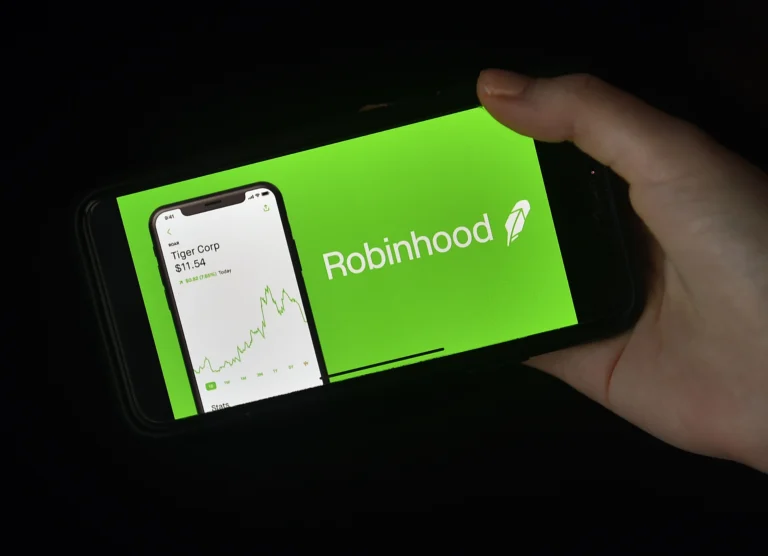
Robinhood Markets Inc. plans to purchase the European cryptocurrency exchange Bitstamp Ltd. for $200 million. This acquisition is a strategic move for Robinhood, a company primarily known for its stock trading platform, to expand its reach beyond the US and delve into the institutional side of the crypto market.
The deal is anticipated to be finalized in the first half of next year, subject to regulatory approval. This will be Robinhood’s first major venture into the institutional business sector, indicating a significant shift in its business strategy.
However, this acquisition comes at a time when Robinhood is under scrutiny by the US Securities and Exchange Commission (SEC). About a month ago, the SEC warned Robinhood that it might face enforcement action related to its crypto operations.
In May, Robinhood revealed that it had received a Wells notice from the SEC. This notice indicates that the SEC’s enforcement staff has made a preliminary decision to recommend enforcement action against the company, signaling potential legal and regulatory challenges ahead for Robinhood.
Boosting Crypto Portfolio: Robinhood’s Latest Move with Bitstamp :
Bitstamp has built a strong reputation among institutional clients for its reliable trade execution, extensive order books, and high-quality API connectivity. These features make Bitstamp a trusted platform for large-scale and professional trading.
The acquisition by Robinhood means that Robinhood will now have access to Bitstamp’s advanced institutional services. These services include:
1)Bitstamp-as-a-Service: A white-label solution that allows other businesses to use Bitstamp’s trading infrastructure under their own brand.
2)Institutional Lending: Providing loans to institutional clients, a service often used for trading and liquidity purposes.
3)Staking: A service that allows clients to earn rewards by participating in the blockchain process of validating transactions.
By acquiring Bitstamp, Robinhood will immediately benefit from Bitstamp’s established relationships with institutional clients, its proven infrastructure, and its industry-leading products. This move enables Robinhood to enter the institutional crypto market with a solid foundation and a range of advanced offerings.
Robinhood is broadening its product offerings and geographical reach to grow beyond its core business of serving retail traders in the US. Recently, it has added a credit card and retirement products to its portfolio. Furthermore, it has expanded internationally by launching its commission-free trading app in the United Kingdom this year.
The acquisition of Bitstamp will give Robinhood a stronger presence outside the US and significantly enhance its capabilities in the cryptocurrency market. Bitstamp’s robust and trusted platform, known for its resilience during market fluctuations, will provide Robinhood with advanced crypto services and infrastructure.
Following the announcement of this acquisition, Robinhood’s shares rose by 2.6% in premarket trading, indicating positive investor sentiment. Johann Kerbrat, Robinhood’s general manager of crypto, highlighted Bitstamp’s strong reputation for integrating customer experience with safety across different regions, appealing to both retail and institutional crypto investors.
For this acquisition, Robinhood received advice from Barclays Capital Inc., while Bitstamp was advised by Galaxy Digital Holdings Ltd.
Robinhood has been expanding its offerings beyond its original function as a trading app for novice stock and options investors. Over the past year, the brokerage has introduced retirement accounts and a credit card, and plans to launch futures trading later this year. The acquisition of Bitstamp supports this broader strategy by enhancing Robinhood’s crypto trading capabilities.
Following the acquisition, Robinhood’s stock (HOOD) rose to $21.57, reflecting a 3.8% increase. Although Bitstamp is smaller than competitors like Binance, Coinbase, and Kraken in terms of monthly trading volume, it offers significant regulatory credentials and international reach.
Robinhood’s crypto trading revenue has seen a substantial rise, increasing to $126 million in the first quarter from $38 million the previous year. Additionally, cryptocurrency assets under custody more than doubled to $26 billion, and the monthly notional crypto trading volume nearly tripled
Bitcoin Breaks $70,000 Barrier: Market Eyes New All-Time Highs

Bitcoin’s recent surge past the $70,000 mark has created a wave of excitement in the crypto market. This upward movement is largely attributed to two key factors:
Improving Risk Appetite: Investors are increasingly willing to take on riskier assets, such as cryptocurrencies, as they seek higher returns. This shift in sentiment is often driven by expectations of favorable market conditions or economic policies.
Significant Inflows into U.S. Spot Bitcoin ETFs: Exchange-Traded Funds (ETFs) that track the price of Bitcoin have seen a substantial increase in investment. These funds make it easier for institutional and retail investors to gain exposure to Bitcoin without directly buying the cryptocurrency, boosting its demand and price.
Additionally, analysts are optimistic about the possibility of Bitcoin reaching new highs soon. This optimism is linked to:
Potential Federal Reserve Rate Cuts: If the U.S. economic data continues to show weakness, there is a higher likelihood that the Federal Reserve will cut interest rates. Lower interest rates generally lead to a more favorable borrowing environment, increasing investment in riskier assets like Bitcoin. This potential for rate cuts is contributing to the bullish sentiment in the market.
Rajagopal Menon, VP of WazirX, emphasized the strong buying momentum for Bitcoin, stating, “Bitcoin could hit new highs this week if weak U.S. economic data continues to support the case for two Federal Reserve rate cuts this year.
Recent reports indicate a slowdown in U.S. economic growth, characterized by drops in manufacturing and construction spending, despite slight gains in the job market. This economic landscape is influencing the Federal Reserve’s strategy, with expectations of holding interest rates steady in June and July, and potential cuts anticipated in September.
U.S. spot Bitcoin ETFs saw their second-largest net inflow yesterday, totaling $887 million, driven by major players such as Fidelity Wise, BlackRock, and ARK 21Shares. This surge underscores the increasing interest in Bitcoin ETFs, not only in the U.S. but also in markets like Hong Kong and Australia. Rajagopal Menon noted, “As long-term holders conclude their sell-off, Bitcoin exchange funds experienced net inflows of $148 million last week, while Ethereum drew $33.5 million.”
The CoinSwitch Markets Desk highlighted the continued bullish sentiment in the market, noting that Bitcoin ETFs have experienced 15 straight days of net inflows. “BlackRock’s iBit now manages over $20 billion in assets, with $2.4 billion added just in the last month alone, marking it the third-largest inflow in the entire ETF market,” the report stated.
Shivam Thakral, CEO of BuyUcoin, emphasized the significant role of institutional investors in driving Bitcoin prices higher. “Spot ETFs have accumulated $2.4 billion in assets over the past month. This strong demand from institutional investors is currently propelling Bitcoin prices, and positive macroeconomic factors are expected to sustain this momentum in the coming weeks,” Thakral said.
Expanding Trends: Institutional Dynamics in the Bitcoin Market
The surge in Bitcoin has reverberated throughout the crypto market. Binance’s native token, BNB, soared to record levels, posting a gain of over 11 percent. This rally followed the news of former CEO CZ commencing his jail term in California. Moreover, Telegram’s TON coin achieved an all-time high, with its native token NOT quadrupling in value within just two weeks of listing.
The latest CoinDCX Market Movement report for June 5, 2024, highlighted Bitcoin’s climb to $71,000, accompanied by ETF inflows exceeding $800 million, marking the highest inflow since March 12.
“BTC now faces the challenge of surpassing its all-time high level around $73,500 to break out of its current range and establish a new all-time high. The funding rates remain neutral, indicating a positive outlook. Technically, the price action appears bullish,” the report stated. However, it also cautioned about the potential for a local top, similar to what was observed in mid-March.
On the other hand, Ethereum, though experiencing a slight uptick, continues to trail behind Bitcoin, currently trading above $3,800. Despite this, most altcoins are displaying signs of recovery and positive movement.
Investor FOMO : Chasing Crypto’s Record Breaking Year

In 2024, the behavior of cryptocurrency markets is not following the usual historical patterns. Typically, during the summer months, there is a slowdown in market activity. However, this year, the trend is different. Instead of a decrease, there has been a substantial increase in investments, with billions of dollars flowing into cryptocurrency funds. This influx of investment has set new records for the year.
A significant factor contributing to this surge is the recent approval of spot Bitcoin and Ethereum ETFs (Exchange-Traded Funds) in the United States. These ETFs allow investors to gain exposure to these cryptocurrencies without having to directly purchase and manage the digital assets themselves.
The approval of these ETFs is a major development in the regulatory landscape for cryptocurrencies. It indicates a potential shift towards more mainstream acceptance and regulation of digital currencies, which could have long-term implications for the market.
Crypto Investment Hits New Highs in 2024:
CoinShares, a firm specializing in managing digital assets, recently shared some impressive data about the cryptocurrency market. According to their report, global crypto asset funds (which are investment funds focused on cryptocurrencies) accumulated a massive $185 million in just one week. This large influx of money pushed the total net inflows (the total amount of new investments minus withdrawals) for the month of May to a record-breaking $2 billion.
This significant monthly total fits into a larger trend that has been developing throughout 2024, where there has been a consistent increase in the amount of money being invested in cryptocurrencies. This growing interest and investment have resulted in year-to-date (YTD) inflows (the total amount invested from the beginning of the year to the current date) surpassing $15 billion for the first time ever.
Bitcoin, the most well-known and influential cryptocurrency, has played a major role in this investment surge. Unsurprisingly, it captured the majority of these inflows. In just one week, Bitcoin-focused funds attracted nearly $150 million, highlighting Bitcoin’s continued dominance and strong appeal to investors within the cryptocurrency market.
The second-largest cryptocurrency, Ethereum, received significant inflows totaling $33.5 million. This two-week streak of increased investment in Ethereum is particularly noteworthy because it breaks a trend of outflows that had persisted for ten weeks prior.
Analysts attribute this change in investor behavior to the recent approval of spot Ethereum Exchange-Traded Funds (ETFs) by regulators. Even though these ETFs have not yet become available for trading, investors seem to be reacting positively to the news, resulting in increased investment in Ethereum.
Ethereum’s Significance: Ethereum is one of the most prominent cryptocurrencies globally, second only to Bitcoin in terms of market capitalization and influence. As a platform for decentralized applications and smart contracts, Ethereum has a unique value proposition in the cryptocurrency space.
The approval of ETFs boosts confidence and draws in fresh investors.
Boost in Investor Confidence: The approval of spot ETFs in the US is perceived as a significant positive for investor sentiment in the cryptocurrency market. This means that investors are more likely to feel confident and secure about investing in cryptocurrencies due to the availability of these ETFs.
Regulated and Secure Access: Spot ETFs provide a regulated and secure way for investors to get exposure to cryptocurrencies. This is important because it offers investors a level of assurance and protection, knowing that their investments are governed by established regulatory frameworks and are less susceptible to risks associated with unregulated markets.
Attraction for Traditional Investors: The availability of spot ETFs may appeal to traditional investors who have been hesitant to enter the cryptocurrency market due to regulatory uncertainties or concerns about the security of digital assets. With the introduction of these ETFs, traditional investors may feel more comfortable dipping their toes into cryptocurrency investments.
Significant Development: The introduction of spot ETFs is described as a noteworthy milestone or advancement for the cryptocurrency market. It signifies progress and maturity within the industry, as traditional financial instruments like ETFs become available for cryptocurrencies.
Expansion of Investor Base: The availability of spot ETFs could potentially broaden the pool of investors participating in the cryptocurrency market. By offering a familiar and secure investment avenue, these ETFs may attract new investors who were previously hesitant to engage with cryptocurrencies directly.
Fostering Further Growth: The introduction of spot ETFs has the potential to stimulate additional growth within the cryptocurrency market. By providing a more accessible and regulated investment option, ETFs may contribute to increased market liquidity, stability, and overall expansion.
Interest in Altcoins Continues :
This statement highlights that while Bitcoin and Ethereum are the most popular choices for crypto investment, other cryptocurrencies, known as altcoins, such as Solana and Chainlink, are also gaining traction. For instance, last week, Solana funds received approximately $6 million in net inflows, while Chainlink saw nearly $1 million in investment.
The ongoing interest in altcoins indicates a diverse market where investors are not solely focused on the well-known cryptocurrencies but are also considering newer options like Solana and Chainlink. This suggests that investors are exploring the possibilities offered by emerging blockchain technologies beyond the established players like Bitcoin and Ethereum.
Embracing the Future: The Next Chapter in Crypto:
The unprecedented bullish sentiment in the crypto market this year challenges the validity of historical seasonal trends. However, financial experts urge caution due to the inherent volatility of cryptocurrencies.
The record-breaking inflows into crypto funds in 2024 paint a picture of a maturing market. The regulatory clarity provided by ETF approvals and the increasing adoption of blockchain technology are undoubtedly contributing to this growth.
Bitcoin Breakthrough: Australia's First Spot ETF Trading Starts Tomorrow

Australia is poised to join the expanding roster of nations providing a spot Bitcoin exchange-traded fund (ETF), with the country’s inaugural product set to launch tomorrow.
Monochrome Asset Management has revealed that its new Bitcoin exchange-traded fund (ETF), designated with the ticker symbol IBTC, is slated to commence trading on June 4th, provided there are no unforeseen delays. An ETF is an investment fund that is traded on stock exchanges, much like stocks.
The IBTC ETF specifically aims to track the performance of Bitcoin, allowing investors to gain exposure to the cryptocurrency without needing to directly purchase and manage it themselves. Additionally, this ETF will charge a management fee of 0.98%, which is a cost borne by investors to cover the fund’s operational expenses.
Monochrome Asset Management, the issuer of the new Bitcoin ETF, provides this fund to enable investors to gain exposure to Bitcoin within a regulated framework. This means that investors can invest in Bitcoin through a structured and officially sanctioned financial product, which offers a level of security and oversight not available with direct cryptocurrency purchases.
Cboe is set to become the first exchange in Australia to list a Bitcoin ETF :
The ETF (exchange-traded fund) tracks the CME CF Bitcoin Reference Rate index. This index reflects the real-time price of Bitcoin based on data from several major cryptocurrency exchanges. By tracking this index, the ETF provides investors with exposure that is directly tied to the spot price of Bitcoin, meaning the fund’s performance will closely mirror the actual price movements of Bitcoin in the market.
In summary, this ETF allows investors to benefit from the price movements of Bitcoin while investing within a regulated and familiar financial product, making it easier and potentially safer for them to include Bitcoin in their investment portfolios.
Cboe is set to become the first exchange in Australia to list a Bitcoin ETF, surpassing the larger and more established Australian Securities Exchange (ASX) in bringing this type of product to the market. This means that investors looking to trade a Bitcoin ETF in Australia will initially do so through Cboe, not the ASX.
However, reports indicate that the ASX is also planning to approve and list spot Bitcoin ETFs before the end of the year. This suggests that while Cboe will be the first to offer such a product, the ASX is actively working towards providing similar investment opportunities, and competition between the exchanges in offering Bitcoin ETFs is expected to increase soon.
Bitcoin ETFs in Australia :
The introduction of Bitcoin ETFs in Australia is capitalizing on the significant interest generated by the recent regulatory approval of Bitcoin ETFs in the US market this past January. When US regulators gave the green light for Bitcoin ETFs, it marked a major milestone for the cryptocurrency industry, providing a new, regulated way for investors to gain exposure to Bitcoin.
This regulatory approval in the US sparked a huge wave of investment from both institutional investors (such as hedge funds, pension funds, and other large entities) and retail investors (individuals buying and selling for personal accounts). These investors were drawn to the ease of accessing Bitcoin through ETFs, which are more familiar and potentially safer than directly buying and holding cryptocurrencies.
Australia is now tapping into this surging interest by launching its own Bitcoin ETFs, aiming to attract similar inflows of capital from both types of investors who are eager to participate in the Bitcoin market within a regulated framework.
Regulated Bitcoin ETFs have been introduced this year in various regions worldwide, including North America, the UK, Europe, and the Asia-Pacific region. Australia’s entry into this space is indicative of the growing acceptance of Bitcoin as an institutional asset class on a global scale.
The emergence of Bitcoin ETFs in different countries reflects a broader trend of institutional adoption and recognition of Bitcoin’s potential as a legitimate investment asset. As more countries embrace Bitcoin ETFs, it suggests a growing acknowledgment of cryptocurrency’s role in traditional investment portfolios.
With major markets now offering spot Bitcoin ETFs, it’s likely that other countries will follow suit, driven by the desire to provide investors with regulated avenues to gain exposure to Bitcoin. The regulated wrapper of these ETFs not only offers legitimacy to the cryptocurrency market but also provides investors with a convenient and transparent way to invest in Bitcoin without the complexities associated with direct ownership and storage of digital assets.
The launch of IBTC in Australia closely follows the introduction of four spot Bitcoin ETFs in Hong Kong, which debuted on April 30. However, the performance of these Hong Kong ETFs has been mixed, with three out of four experiencing cumulative net outflows since their launch, except for Bosera’s spot Bitcoin ETF.
In contrast, Bitcoin ETFs in the United States have seen more positive traction, with a cumulative inflow of $13.9 billion. This success is somewhat offset by $17.9 billion in outflows from the Grayscale Bitcoin Trust, a significant player in the cryptocurrency investment space.
Despite the mixed performance observed elsewhere, there’s optimism surrounding the prospects of spot Bitcoin ETFs in Australia. Yew, an industry expert, highlighted Australia’s strong interest in cryptocurrencies, describing it as a “very crypto-heavy country.”
He anticipates that local spot Bitcoin ETFs could attract between $3 billion to $4 billion in net inflows within the initial three years of operation. This projection suggests confidence in the appetite for Bitcoin investment products within the Australian market, despite varying outcomes seen in other regions.
Solana Price Prediction: Ripple CEO Sees SOL ETFs as ‘Inevitable’ – Will SOL Hit $1,000?
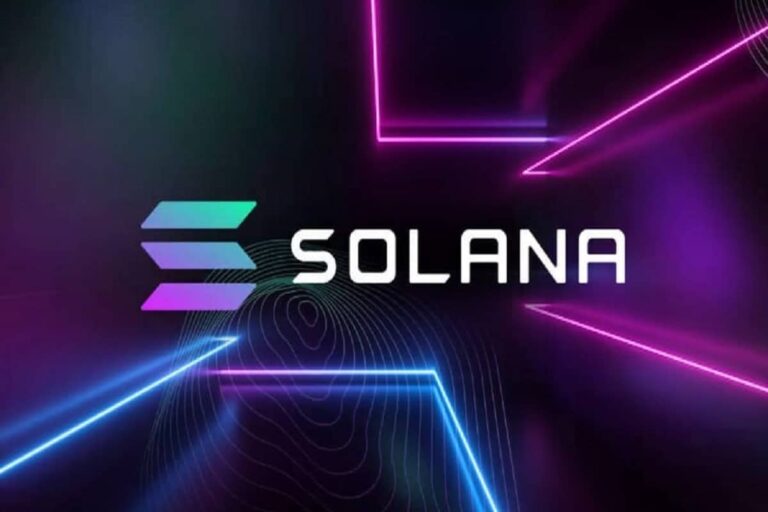
SOLANA Overview :
Solana is a high-performance blockchain known for its scalability, speed, and low transaction costs. It can handle a large number of transactions per second (TPS), making it an attractive platform for decentralized applications (dApps) and various blockchain projects.
Market Position:
Solana has emerged as a strong competitor to Ethereum, particularly in the realm of decentralized finance (DeFi) and non-fungible tokens (NFTs). Its technological advantages have positioned it as a key player in the cryptocurrency market.
Background on ETFs and Their Importance:
What is an ETF?
An Exchange-Traded Fund (ETF) is a type of investment fund that is traded on stock exchanges. It holds assets such as stocks, commodities, or in this case, cryptocurrencies. ETFs are popular because they offer a way for investors to gain exposure to an asset class without having to buy and manage the assets directly.
Significance of Bitcoin and Ethereum ETFs:
The approval of Bitcoin and Ethereum ETFs by the SEC marked a significant milestone in the cryptocurrency space. It represented a step towards mainstream acceptance and provided traditional investors with a regulated and convenient way to invest in these digital assets.
Brad Garlinghouse's Prediction
Rationale Behind the Prediction:
Precedent Set by Bitcoin and Ethereum ETFs: The approval of these ETFs demonstrates the SEC’s willingness to consider and approve cryptocurrency-based financial products. This sets a positive precedent for other major cryptocurrencies like Solana.
Regulatory Clarity: Garlinghouse emphasizes that clear and supportive regulation is crucial for the growth of digital assets. He likely sees the SEC’s actions as a step towards broader regulatory clarity, which could pave the way for more cryptocurrency ETFs.
Growing Market Interest: With increased institutional and retail interest in cryptocurrencies, there is a strong demand for new financial products like ETFs that offer easy access to these assets.
Implications for Solana (SOL) and the Market :
Potential Price Impact:
Approval of a Solana ETF would likely lead to increased demand for SOL, as ETFs make it easier for a wider range of investors to buy into the cryptocurrency. This could drive up the price of SOL.
Speculative Price Target:
$1,000 Prediction: While the prediction that SOL could reach $1,000 this year is speculative, it reflects the optimism and bullish sentiment surrounding Solana. Achieving such a price would depend on a confluence of positive factors, including strong market growth, technological advancements, and favorable regulatory developments.
Market Growth:
$5 Trillion Crypto Market: Garlinghouse’s prediction of a $5 trillion cryptocurrency market underscores his belief in the long-term potential of digital assets. Achieving this market size would likely involve significant growth in various sectors, including DeFi, NFTs, and broader blockchain adoption.
Challenges and Considerations :
Regulatory Hurdles:
Despite the progress, regulatory approval for new financial products can be unpredictable. The SEC and other regulators may impose stringent requirements or face political and economic pressures that influence their decisions.
Market Volatility:
The cryptocurrency market is known for its volatility. Price predictions are inherently uncertain, and external factors such as macroeconomic trends, technological developments, and market sentiment can significantly impact prices.
Technological and Competitive Factors:
Solana faces competition from other blockchain platforms and must continue to innovate and scale to maintain its position. Any technological setbacks or loss of developer and user interest could affect its market performance.
Conclusion
Overall, the long-term outlook for Solana’s price remains optimistic, especially as the market anticipates the potential introduction of SOL ETFs. Key factors driving this bullish sentiment include growing regulatory clarity and increasing institutional interest. These developments could propel Solana to significant gains, with some speculating that SOL could reach $1,000 by the end of next year.
Meme Tokens Ready for Big Rallies:
Memecoins have surged in popularity recently, largely fueled by endorsements from prominent figures and their integration into digital culture. Despite their allure for potentially high returns, memecoins come with significant risk. Engaging with them requires thorough research and experience to navigate safely.
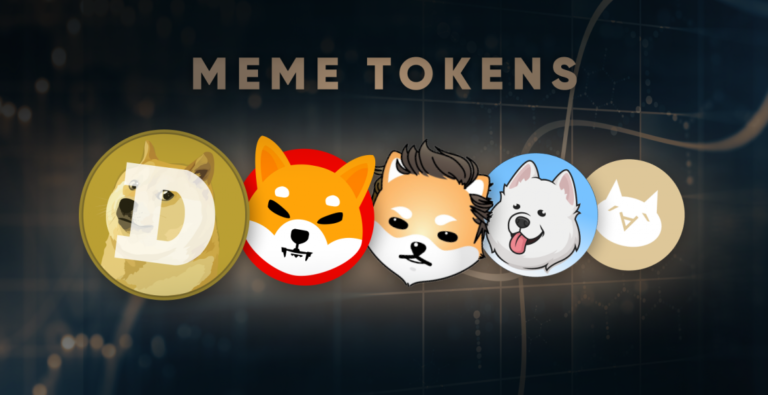
The popularity of memecoins:
Memecoins have surged in popularity recently, largely fueled by endorsements from prominent figures and their integration into digital culture. Despite their allure for potentially high returns, memecoins come with significant risk. Engaging with them requires thorough research and experience to navigate safely.
Below are the Solana based MEME Coins:
Dogwifhat :
Dogwifhat is a meme coin inspired by a popular internet meme featuring a Shiba Inu dog wearing a pink knitted hat. This token operates on the Solana (SOL) blockchain.
Market cap -$3,257,456,338
Current Price -$3.285
BONK:
BONK is a memecoin built on the Solana blockchain, airdropped to the Solana community on Christmas Day 2022. Featuring a Shiba Inu dog as its mascot, BONK draws inspiration from Dogecoin. It is designed to integrate with Solana dApps across the network, incentivizing user participation. BONK prioritizes community power and decentralization, steering clear of traditional venture capital influence.
Market Cap – $2.25B
Current Price -$0.00003323
BOME:
BOME, which stands for “Book of Meme,” is a memecoin on the Solana network. Its goal is to create a permanent storage library for meme coins. The BOME token is used to preserve and engage with meme culture via a decentralized digital compendium. It encourages participation in decentralized storage solutions, supports trading and gambling within a meme-focused financial ecosystem, and facilitates governance and cross-chain interactions for content creation and sharing on decentralized social media platforms.
Market Cap – $931,069,504
Current Price -$0.01355
MEW:
A new Solana meme coin, Cat in a Dog’s World (MEW), has become a hot topic, with its price rallying nearly 140% in the past 24 hours and drawing significant attention. MEW is positioning itself as a rival to existing Solana meme coins, with its recent price action aligning with the broader uptrend in Solana.
Market Cap – $411,973,074
Current Price -$0.004635
MYRO :
Myro is a cryptocurrency on the Solana blockchain. It’s easy, secure, and open to everyone. Inspired by dogs, it’s all about inclusion and positivity. Myro wants to make crypto simple for everyone, whether you’re an expert or just starting out.
Market Cap – $255,796,480
Current Price -$0.271
Market Cap and Current Price is based on CoinMarketCap
ARK Invest Terminates Alliance with 21Shares Regarding Proposed Ethereum Fund

ARK Invest has decided to conclude its partnership with 21Shares regarding the proposed Ethereum fund.
Cathie Wood’s Ark Investment Management, known for its innovative and forward-thinking investment strategies, had initially partnered with 21Shares to launch an exchange-traded fund (ETF) focused on investing directly in Ether, the second-largest cryptocurrency by market capitalization.
However, in an updated filing submitted to the US Securities and Exchange Commission (SEC) on Friday, it was revealed that Ark has decided to withdraw its involvement from the proposed ETF. This means that Ark’s name has been removed from the application for the ETF.
As a consequence of Ark’s withdrawal, the name of the ETF has been changed from “Ark 21Shares Ethereum ETF” to “21Shares Core Ethereum ETF.” This reflects 21Shares’ continued commitment to launching an ETF that tracks the performance of Ethereum, but without the direct involvement of Ark Investment Management.
The reasons behind Ark’s decision to withdraw from the partnership and the ETF initiative are not explicitly mentioned in the filings. However, this development underscores the complexities and challenges involved in launching cryptocurrency-focused investment products, particularly ETFs, in the highly regulated financial markets.
Ark’s Bitcoin Bet: Resolute Amidst Market Volatility”
Following its collaboration with 21Shares, Ark emerged as one of the proficient issuers to debut spot-Bitcoin ETFs earlier this year.
In spite of withdrawing from the Ethereum ETF, Ark maintains its steadfast focus on the Bitcoin ETF. With assets totaling $3.2 billion, the ARK 21Shares Bitcoin ETF (ticker ARKB) continues to hold the fourth position among Bitcoin ETFs, underscoring Ark’s enduring dedication to cryptocurrency investments.
The sudden approval by the SEC of the 19b-4 filings from exchanges managed by Cboe Global Markets Inc., Nasdaq, and the New York Stock Exchange to list spot-Ether ETFs sparked excitement in the market.
Issuers are still awaiting the regulator’s green light on their S-1 statements before trading can begin.
Amidst the recent progress, 21Shares expressed optimism about the SEC’s approval and restated their commitment to broadening access to cryptocurrencies as an investment option for US investors. They also underscored their continued partnership with Ark on the ARK 21Shares Bitcoin ETF, introduced in January, as well as their existing suite of futures products.
Deadline Dash: S-1 Forms Filed at the Eleventh Hour:
Other issuers, such as Franklin Templeton, Fidelity Investments, VanEck, and Invesco Ltd., have also submitted revised S-1 statements, indicating their interest in launching Ether ETFs. However, the SEC’s decision on these filings is pending.
In the meantime, Franklin Templeton has updated its proposed fund details, revealing a planned fee of 0.19%. This fee will be waived for the first six months on the initial $10.0 billion of the ETF’s assets.
Interestingly, Wood’s Bitcoin ETF saw its largest one-day outflow since its inception earlier this year, with nearly $100 million exiting the fund.
What is Ethereum?
Ethereum operates as a Proof-of-Stake blockchain, driving decentralized applications (dApps) through smart contracts, devoid of centralized governance. As a trailblazer in smart contract technology, it boasts the broadest array of dApps, spanning decentralized exchanges, crypto lending platforms, and beyond.
Additionally, Ethereum hosts a multitude of Layer 2 solutions, catering to users seeking more cost-effective and expeditious transaction processing on the blockchain. Notable among these solutions are Arbitrum, consolidating multiple transactions into a single Ethereum transaction, and Polygon’s Proof-of-Stake chain, operating as a parallel sidechain to Ethereum.
History of Ethereum:
In 2013, Vitalik Buterin introduced the whitepaper, laying the foundation for the Ethereum project. Gavin Wood followed up in 2014 with the publication of the yellowpaper, delving into the technical aspects of Ethereum’s workings. After a fundraising sale in September 2014, the network was launched in July 2015. Finally, on 15 September 2022, Ethereum marked a significant milestone by transitioning from Proof-of-Work to Proof-of-Stake consensus through the Merge.
What's on the horizon for Ethereum's future?
After the Merge, the final stage of Ethereum 2.0 is sharding. Sharding involves dividing the Ethereum blockchain’s database into 64 shard chains. This approach allows validators to focus solely on verifying their assigned shards, rather than the entire network, making it easier for anyone to run a node. Sharding is expected to promote further decentralization, improve scalability, and reduce gas fees on the Ethereum network.
The Trump Effect: How the Trial Verdict May Shape Cryptocurrency Markets

The outcome of the historic trial involving the former US president surfaces just months before the nation heads to the polls for the November elections, introducing a pivotal moment in the political timeline.
Convicted on 34 counts of falsifying business records, each carrying fines, probation, or up to four years in prison, former President Trump faced a judge’s threat of imprisonment for violating a gag order during the trial. However, the likelihood of similar consequences now remains uncertain. Any forthcoming sentence is anticipated to be served concurrently, not consecutively.
In a landmark criminal hush-money trial, former President Donald Trump has been convicted, marking a historic development that may impact the 2024 election campaign. He now holds the distinction of being the first US president, both past and present, to face and be found guilty of a criminal charge.
On Thursday, defense lawyer Todd Blanche requested a sentencing date for July 11. This timing is noteworthy as it precedes the start of the Republican National Convention in Wisconsin by four days, where Trump is expected to be officially designated as the party’s presidential nominee.
Trump’s attendance at the Republican National Convention, where he is anticipated to accept the party’s nomination, is unlikely to be affected by his sentencing, despite its proximity. Legal analyst Kuby suggested that Trump would probably remain free during his appeal process, alleviating concerns about missing the event.
The recent verdict in the hush money trial involving former President Donald Trump has garnered considerable attention. Now, let's delve into how this development could potentially influence the cryptocurrency market:
Navigating Market Winds:
Sentiment and Uncertainty
Trump’s conviction on all 34 felony counts of falsifying business records has introduced uncertainty and may influence investor sentiment. Cryptocurrency markets frequently respond to external occurrences, particularly those concerning political figures and legal proceedings.
Positive Effects:
Amidst concerns over Trump’s legal challenges, some investors may interpret the situation as indicative of instability within traditional financial systems. Consequently, they may opt for cryptocurrencies, which are perceived as decentralized and less prone to government influence.
Previous endorsements from Trump have triggered price increases for specific cryptocurrencies. Therefore, any positive remarks or actions from him in the future could potentially reignite market enthusiasm.
Negative Effects:
Trump’s criticism of Bitcoin as a “scam” and his preference for maintaining the dominance of the US dollar could introduce uncertainty. Investors may become apprehensive about the possibility of regulatory changes or government crackdowns on cryptocurrencies, particularly if Trump’s influence grows or if he continues to express negative opinions.
Navigating Legal Terrain:
Implications and Considerations
With Trump’s sentencing scheduled for July 11, the range of potential outcomes includes fines, probation, or a prison sentence of up to four years.
Ongoing legal developments have the potential to influence market stability and investor sentiment.
The repercussions of Trump’s verdict on the cryptocurrency market are unclear. Investors should stay vigilant, monitoring updates closely and exploring diversification strategies to manage potential risks. Remember, the crypto market’s volatility means external factors can significantly shape its path.
Trump Convicted: Next Legal Steps and Potential Implications
Appeal on Judge’s Decision: Trump’s lawyer intends to appeal the judge’s decision not to recuse himself from the case, arguing that the judge is biased. This means they believe the judge has shown unfair prejudice against Trump, which could affect the fairness of the trial.
Impact on 2024 Campaign: The conviction raises questions about how it will affect Trump’s campaign for the 2024 presidential election. Legal troubles can influence public perception and voter support, but the extent of this impact is uncertain.
Political Expert Opinions: Some political experts believe that the conviction will have little effect on Trump’s political standing. This suggests that, despite the legal issues, Trump’s base of support might remain strong, and his campaign could continue as planned.
Trump’s Position: Despite the conviction, Trump is still considered a strong contender for the Republican nomination for president. This indicates that his influence within the Republican Party remains significant.
Public Reactions: Public opinion is divided. Some people are satisfied with the conviction, feeling that justice has been served. Others continue to support Trump, viewing the trial and conviction as politically motivated actions aimed at undermining his campaign and influence.
In summary, Trump’s legal team plans to challenge the judge’s impartiality, the conviction’s impact on his 2024 campaign is debated, he remains a strong Republican candidate, and public opinion is polarized between those who see justice in the verdict and those who view it as a political attack.
Can Trump Challenge the Conviction on Appeal?
Yes, Trump is expected to appeal the conviction. His defense will likely argue that the indictment was legally flawed and politically motivated. The appeal may focus on points such as the inapplicability of state election laws to federal elections and the assertion that the charges themselves were legally improper.
Is it still possible for Trump to become president again?
Yes, Trump could still become president again. The US Constitution stipulates that a president must be at least 35 years old, a natural-born US citizen, and have lived in the country for at least 14 years. Even if he were imprisoned, Trump could theoretically take the oath of office on January 20, 2025.
What are the next legal and political steps for Trump?
Following his sentencing, Trump can pursue appeals through higher courts, leveraging his defense team’s groundwork citing potential bias and procedural concerns. Politically, Trump is rallying support, portraying his conviction as a politically motivated assault. Despite legal challenges, leading strategists still view Trump as a formidable candidate for the 2024 election.
Trump can vote for himself. The US Constitution requires presidents to be at least 35 years old, natural-born US citizens, and residents for 14 years. Even if he were incarcerated, he retains the right to vote and could cast a ballot for himself in the election.
Cryptocurrency Simplified: Why It's Gaining Global Attention

Introduction to Cryptocurrency:
Cryptocurrency is a digital payment system that works without banks. It allows anyone, anywhere, to send and receive payments directly. Unlike physical money, cryptocurrencies exist as digital records in an online database. Transactions are recorded in a public ledger and stored in digital wallets.
Cryptocurrency is named for its use of encryption to verify transactions. This advanced coding ensures the security of data stored and sent between wallets and public ledgers.
Cryptocurrencies are digital assets with no physical form. They operate on a public ledger known as a Blockchain, which records all transactions. Blockchain encryption ensures these transactions are secure, unchangeable, and protected from tampering and fraud.
Bitcoin, the first and most well-known cryptocurrency, was created in 2009. Many people are interested in cryptocurrencies for trading and making profit, often driving prices up through speculation.
Understanding the Blockchain Concept:
Blockchain is an encrypted public ledger for transferring, recording, and storing digital assets. It works on a decentralized network, meaning no single authority controls it. Instead, participating computers verify and facilitate each transaction, or “block,” within the chain.
This makes blockchain transactions secure and nearly impossible to alter, as many computers must agree on each transaction. However, this verification process can make blockchain transactions slow and energy-intensive, as numerous computers globally work to verify each transaction.
The Rise of Blockchain as a Game-Changing Technology:
Blockchain’s ability to securely record and store transaction data has made it appealing to various sectors. Moreover, blockchain is an open-source network. This allows developers to autonomously enhance or innovate its functionalities. As blockchain ecosystems become more efficient, it becomes increasingly seamless for corporations and governments to incorporate them into their regular operations.
Here are some potential use cases for blockchain:
Payments, both domestic and international
Contracts
Health care records
Real estate transactions
Energy transactions
Supply chain management
Digital art transactions (NFTs)
Voting
Exploring Cryptocurrency Options and it's acceptance:
Out of over 20,000 cryptocurrencies, Bitcoin and Ethereum stand out as the largest by market value. At present, Bitcoin and Ethereum are increasingly recognized across various channels, with acceptance extending to exchange-traded funds (ETFs) authorized by the U.S. Securities and Exchange Commission(SEC) and Hong Kong’s Securities and Futures Commission (SFC).
Here are some well-known examples of cryptocurrencies:
Bitcoin(BTC): Bitcoin, the pioneer, Created in 2009, believed to be developed by Satoshi Nakamoto. it’s the first and most traded cryptocurrency, emerged as a different form of money, aiming to challenge traditional currencies like the U.S. dollar. While some businesses accept Bitcoin, most investors see it as a speculative asset.
Ethereum(ETH): Established in 2015, it’s a blockchain platform featuring its own currency. Ethereum holds the second position in market capitalization.
Unlike Bitcoin, it’s not just about currency. Ethereum serves as a platform for secure data transfer, storage, and development of new programs and applications. Essentially, Ethereum forms a vast digital ecosystem for transporting, storing, and creating digital content and software.
Ripple(XRP): Founded in 2012, Ripple operates a distributed ledger system that goes beyond cryptocurrencies, tracking various transaction types. It’s collaborated with banks and financial institutions.
Solana(SOL): Solana which was founded in 2020, is a cryptocurrency and blockchain platform designed for decentralized applications (DApps) and decentralized finance (DeFi) projects. It aims to provide fast, secure, and scalable blockchain solutions, offering high throughput and low transaction costs.
Cryptocurrencies other than Bitcoin are collectively referred to as “altcoins” in order to differentiate them from the original.
The Global Crypto Market cap as of Today is $2.52 Trillions and Bitcoin’s dominance in crypto market is currently 52.64% as per CoinMarketCap.(https://coinmarketcap.com/)
Beginner's Guide: Purchasing Cryptocurrency
Step1:Selecting a platform
You’ll begin by selecting the platform you wish to use.
You can buy crypto from a crypto exchange or a financial institution that handles crypto transactions.
After buying crypto, you can store it in a digital wallet, online wallet, or hardware wallet.
Step2:Depositing funds into your account
Once you’ve picked your platform, the next step is adding money to your account to start trading. Many crypto exchanges let you buy crypto with fiat currencies like US Dollars, British Pounds, or Euros using debit or credit cards, though this varies.
Buying crypto with credit cards is risky, and some exchanges don’t allow it. Some credit card companies also ban crypto transactions due to crypto’s high volatility. It’s not smart to risk going into debt or paying high fees for such volatile assets.
P2P was created to enable P2P currency exchange transactions with local currencies. The service is a peer-to-peer marketplace that allows you to directly trade cryptocurrencies, with other exchange users using your preferred local currency, price and payment method.
Fees are crucial to consider, including deposit and withdrawal fees, plus trading fees. These vary by payment method and platform, so research is essential beforehand.
Step3:Making a trade
You can place an order through your broker’s or exchange’s website or mobile app. To buy cryptocurrencies, select “buy,” choose the order type, enter the amount you want to purchase, and confirm the order. The same process applies for “sell” orders.
There are other ways to invest in crypto too. Payment services like PayPal, Cash App, and Venmo allow users to buy, sell, or hold cryptocurrencies. Additionally, you can invest through:
Bitcoin trusts: Buy shares of Bitcoin trusts through a regular brokerage account, giving you exposure to crypto through the stock market.
Bitcoin mutual funds: Choose from Bitcoin ETFs and mutual funds.
Blockchain stocks or ETFs: Indirectly invest in crypto through companies specializing in blockchain technology. Alternatively, buy stocks or ETFs of companies using blockchain technology.
The best option for you depends on your investment goals and risk tolerance.
Potential Risks of Crypto Investments:
Here are some common risks in cryptocurrency investment:
Volatility risk: Crypto prices often experience big swings due to economic or market conditions.
Liquidity risk: Some cryptocurrencies have low trading volume, making them vulnerable to manipulation by large buyers or sellers.
Cybersecurity risk: Your crypto can be stolen if someone gains access to your wallet’s private key.
Overnight risk: Crypto trades around the clock, so your holdings can be affected by sudden changes overnight.
Vanishing risk: Certain factors have led to the disappearance of some crypto coins, although this is rare and specific to certain coins.
Cryptocurrency Fraudulent Activities and Scams:
Cryptocurrency-related crimes are becoming more common. Some common scams include:
Fake websites: These sites promise high returns but are fraudulent and may abscond with your investment.
Virtual Ponzi schemes: Fraudsters entice investors with fictitious opportunities, using new investors’ money to pay off earlier investors. BitClub Network, for instance, amassed over $700 million before its organizers were indicted.
False endorsements: Scammers impersonate celebrities endorsing cryptocurrencies, deceiving investors into purchasing them. They then sell their holdings after driving up the price, causing losses.
Romance scams: Scammers on dating platforms or social media platforms persuade individuals to invest in cryptocurrencies, resulting in significant financial losses. In the first seven months of 2021, the FBI received over 1,800 reports of such scams, with losses totaling $133 million.
In summary, while cryptocurrency was initially intended as an alternative currency, many investors now see it more as an alternative investment or a way to invest in blockchain technology. Crypto is still developing, similar to the tech sector in the 1990s. There are promising ideas, but not all will become widely used. If you’re considering investing in cryptocurrencies, do so carefully.
Mt. Gox Shocks Market: $9 Billion Bitcoin Transfer to Unmarked Wallet, BTC Price Dips 3%
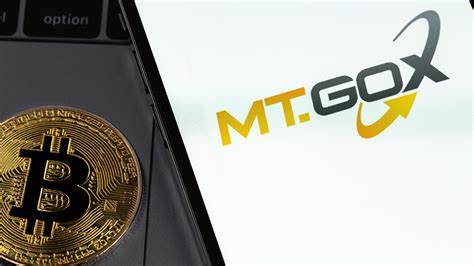
Mt. Gox, initially established as an online marketplace for trading collectible cards, transitioned into a leading Bitcoin exchange that dominated the cryptocurrency landscape. Founded in 2010 and headquartered in Shibuya, Tokyo, Japan, Mt. Gox swiftly emerged as the primary platform for Bitcoin transactions, facilitating over 70% of global buys and sells by early 2014. However, its trajectory was marred by controversy when it abruptly halted operations amidst revelations of its association with the disappearance of hundreds of thousands of Bitcoins, valued at hundreds of millions of US dollars.
Bitcoin experienced a 3% decline on May 28 as wallets previously associated with the defunct crypto exchange Mt. Gox transferred 75,021 BTC, equivalent to approximately $5 billion at the time, to an undisclosed wallet. More transactions continued to flow into the unknown destination.
The transfer occurs in anticipation of the exchange’s scheduled distribution of its Bitcoin holdings to creditors, set to take place before October.
According to Whale Alert’s update, the Bitcoin in motion was deposited into an “unknown wallet.
Arkham Intelligence, an on-chain monitoring platform, has yet to designate a label for the receiving wallet. Despite the recent transfer, their platform indicates that Mt. Gox still retains nearly 138,000 BTC, valued at over $9.47 billion.
BTC has remained in a consolidation phase within the range of $65,000 to $70,000 for an extended period. Despite multiple attempts to surpass the $70,000 mark, bullish momentum has lacked sufficient support to sustain upward momentum.
For Bitcoin to rally further, it needs to break above $70,000 convincingly. If it can’t hold above $66,000, there’s a risk of a drop to $64,000 and potentially lower.
Here are 5 token unlocks to watch this week.

Projects typically plan token unlocks strategically, involving the release of tokens that were previously locked up as per fundraising agreements. This helps mitigate market pressure and prevents a sudden decrease in token prices.
1.)Optimism (OP):
On May 31, 31.34 million OP tokens will be unlocked, affecting the current circulating supply, which is 1.08 billion OP tokens.
The OP token gives holders governance rights in Optimism’s ecosystem, allowing them to vote on proposals and decisions that affect the network’s development and management. Optimism, a Layer-2 scaling solution, aims to boost transaction speed and cut costs on the Ethereum mainnet. TokenUnlocks indicates that the distribution will assign these tokens to investors and core contributors.
2.)1inch (1INCH):
On June 1, 98.7 million 1INCH tokens will be unlocked, impacting the current circulating supply, which stands at 1.15 billion 1INCH tokens. 1inch aims to optimize and simplify trading by finding the most efficient transaction routes, minimizing slippage, and reducing trading fees. It is a decentralized exchange aggregator that sources liquidity from various DEXs to provide users with the best possible trading rates.
The release will include nearly 100 million tokens, earmarked for developers, early investors, and venture capital funds.
3.)dYdX (DYDX):
On June 1, 33.33 million DYDX tokens will be unlocked, affecting the current circulating supply, which is 279.8 million DYDX tokens.
In early 2023, dYdX, the largest decentralized perpetual futures trading protocol, announced changes to its initial tokenomics. According to the update, 27.7% of dYdX’s total supply will go to early investors, 26.1% to the treasury, 15.3% to the team, and 7.0% to future dYdX employees and consultants. Most DYDX unlocked on June 1 will be distributed among investors and the project team, with the remaining tokens reserved for future employees.
4.)Sui (SUI):
On June 1, 65.08 million SUI tokens will be unlocked, impacting the current circulating supply, which stands at 2.33 billion SUI tokens.
Sui is a high-performance Layer-1 blockchain developed by Mysten Labs, founded in 2021 by former Novi Research employees, creators of the Diem blockchain and the Move programming language. It utilizes a Proof-of-Stake consensus algorithm to ensure network operation and security.
5.)Ethena (ENA):
On June 1, 53.6 million ENA tokens will be unlocked, affecting the current circulating supply, which stands at 1.47 billion ENA tokens.
Ethena, built on Ethereum, is a synthetic currency protocol providing a native cryptocurrency solution independent of traditional banking. It also offers global users the ‘Internet Bond,’ a dollar-denominated savings instrument.
While token unlocks are commonly viewed as bearish, a thoughtfully designed schedule can actually bolster a project’s long-term sustainability. Timed in accordance with milestones and development achievements, unlocks can inspire team members, foster community involvement, and stimulate ecosystem expansion.
Don't Miss Out on Millions: Top 10 AI Coins Positioned for 5X to 50X Upswing! Invest Smart for Long-Term Wealth

AI(Artificial Intelligence):
Let’s dive into the fascinating world of AI crypto coins —where artificial intelligence meets blockchain technology.The Artificial Intelligence (AI) market cap as of today is $33.5 Billion according to CoinGecko. Artificial Intelligence (AI) tokens are cryptocurrencies that power AI-related projects. These coins are not just about trading; they are like the dynamic duo of the crypto universe, combining data-driven smarts with decentralized magic. Here’s a glimpse of some remarkable AI projects that are making waves in Crypto.
1)Render– Render(RNDR) Coin is a distributed GPU rendering network built on top of the Ethereum blockchain, aiming to connect artists and studios in need of GPU compute power with mining partners willing to rent their GPU capabilities out.
The current price of Render is around $10.
From the Recent Low, Render has already given 10x return to the early investors. Still it has a potential to generate up to 5-10x returns to the investors.
The current Market cap of this coin is around $4 Billion and current circulating supply is 388,643,224 RNDR according to CoinMarketCap.
2)Near Protocol – Near Protocol is a Layer 1 Blockchain that was designed as a community-run cloud computing platform and that eliminates some of the limitations that have been bogging competing blockchains, such as low transaction speeds, low throughput and poor interoperability. This provides the ideal environment for Dapps and creates a developer a user-friendly platform.
The current price of Near is around $8.
Near Already given 8x return to the investors from the recent low. Still it has potential to generate up to 5X returns to the investors.
The current Market cap of this coin is around $8 Billion and the Circulating supply is 1,079,384,578 NEAR according to CoinMarketCap.
3)Ocean Protocol – Ocean Protocol utilizes a combination of blockchain technology, decentralized networks, and cryptographic techniques to facilitate secure and privacy-preserving data sharing. Ocean Protocol goal is to build the tools and services to facilitate a new Data Economy that gives data owners control while preserving privacy and helping to kickstart commercialization of data, including data marketplaces.
The Current Price of Ocean is around $0.95 .
In this bull season Ocean already given 10X returns to the early investors from the recent low.Still it has potential to generate up to 10X returns to the investors.
The Current Market cap of Ocean is around $540,392,739 and the Circulating supply is 568,381,103 Ocean according to CoinMarketCap.
4) Arkham ARKM – Arkham is a platform that uses AI to reveal hidden details in blockchain data. Arkham is a tool that uses AI to uncover hidden information in blockchain data. It has two main parts: the Analytics Platform and Intel Exchange. The Analytics Platform analyzes different aspects like transactions and network connections. The Intel Exchange lets users trade labels and other data about blockchain addresses.
The Current Price of ARKM is around $2.25.
In this bull season ARKM already given 6X return to the early investors from the recent low.Still it has potential to generate up to 10X returns to the investors.
The Current Market cap of ARKM is around $452,965,595 and the Circulating supply is 204,600,000 ARKM according to CoinMarketCap.
5)NFPrompt NFP – NFPrompt is an AI-driven UGC platform designed for the new generation of Web3 creators. It’s an all-in-one platform with the power of AI-creation, social community, and commercialization.
The Current Price of NFP is around $0.46 .
It has potential to generate up to 25X returns to the investors.
The Current Market cap of NFP is around $116,427,170 and the Circulating supply is 250,000,000 NFP according to CoinMarketCap.
NOTE: Some of below low cap coins can generate up to 25-50X in this bull season.
Coins CMP MarketCap Circulating Supply
1) GPU $1.27 $121,837,485 94,913,632
2)PAAL AI $0.42 $352,103,539 818,324,610
3)Phala $0.18 $137,495,813 724,384,625
4)iMe Lab LIME $0.085 $40,187,782 472,038,858
5)Clore.ai $0.17 $60,921,702 351,159,942
Disclaimer : We do not recommend that any cryptocurrency should be bought, sold, or held by you. Do conduct your own due diligence and consult your financial advisory before making any investment decision.
If Trump gets re-elected, he promises to forgive Silk Road creator Ross Ulbricht
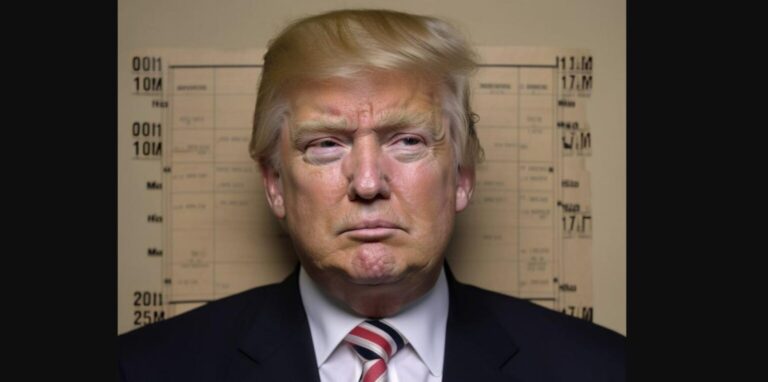
Former President Trump promises to pardon Silk Road founder Ross Ulbricht if re-elected in November. He announced this during the Libertarian Party’s National Convention in Washington on May 25th.
“If you vote for me, on day one I will commute the sentence of Ross Ulbricht,” Trump said
He expressed his intention to bring back home Ulbricht, who has already served 11 years
Ulbricht handed two life sentences in jail
Silk Road, the pioneer of modern darknet markets using Bitcoin for transactions, began in 2011 and was run by Ulbricht, also known as ‘Dread Pirate Roberts.
But on October 1, 2013, the FBI took Ulbricht’s laptop, which led to his arrest.
Ulbricht was found guilty in a U.S. federal court in 2015 for his involvement in Silk Road’s operations.
He got two life sentences and forty years with no chance of getting out.
Trump also talked about supporting cryptocurrency, which is a change from his previous doubts.
He emphasized his dedication to developing cryptocurrency and Bitcoin within the U.S., rather than letting it thrive overseas.
Also, Trump promised to defend people who keep their crypto assets outside centralized exchanges, supporting their right to self-custody.
He even mentioned Senator Elizabeth Warren, promising to keep her and her group from touching their Bitcoin.
Trump’s mention of pardoning Ulbricht has sparked talks among the crypto and legal communities.
Some say giving Ulbricht a pardon would give him a fresh start after his long time in prison, while others worry about pardoning someone convicted of running an illegal marketplace.
Top 5 trending Crypto categories where investment can be done to diversify your crypto portfolio for Big profit.

1)Ai (Artificial Intelligence):
Artificial Intelligence or AI tokens refer to cryptocurrencies that are specifically developed to fuel AI-based projects, applications, and services, such as decentralized AI marketplaces, AI-powered trading algorithms, AI-driven decentralised autonomous organisations, and many others. These tokens serve either as a means of payment for transactions on the AI platform or as a way of conferring governance rights to holders.
Popular Ai tokens are RENDER, OCEAN, FETCH.AI, GPU, AKT
2)Blockchain based token or Difi (Decentralised Finance)-
The components of DeFi are cryptocurrencies, blockchain technology, and software that allow people to transact financially with each other.
Blockchain based token are divided into Layer 1 blockchain network and Layer 2 Blockchain network.
Layer 1blockchain network is fundamental, base-level chain, providing the foundation for layer 2 blockchain.
Example of Layer 1 blockchain are BITCOIN, ETHEREUM, SOLANA, POLKADOT, AVAX, COSMOS
Example of Layer 2 blockchain network- POLYGON(MATIC), BNB, MNT, ARB, OP
3)Gaming:
crypto coins, also known as GameFi tokens, represent the confluence of blockchain technology and the video game industry. They constitute the cornerstone of an emerging ecosystem where gamers can earn cryptocurrency through participating in the in-game economy, often via play-to-earn models. These digital currencies serve as the transactional medium within virtual worlds, allowing players to buy, sell, or trade in-game assets with real-world value.
Popular Gaming coins are
ACE, IMX, GALA, PYR, PIXELS
4)RWA- Real world Assets (RWA) altcoins, or Real World Asset altcoins, represent a revolutionary advancement in the realm of cryptos. These tokens tokenize real-world assets, transforming physical assets into digital tokens securely recorded on the blockchain. By bridging the gap between traditional assets and blockchain technology, RWA tokenization offers a plenty of benefits.
Most Popular RWA tokens are ONDO, OM, PENDLE, RIO, CFG
5)MEME – A memecoin, as the name suggests, is a coin built on the back of a meme and a running joke. While the idea behind these crypto projects might have been a joke, at the same time – the current status of these coins is no joke. Meme coins tend to have some of the strongest community backing out of the entire crypto industry. In most cases, these are crypto projects that are run primarily by the community’s decisions, more than most other projects in the crypto world.
Most popular Meme Coins are
DOGE coin, SHIBA INU, PEPE , FLOKI INU, BONK
After Ethereum ETF approval, keep an eye on these Top 10 Altcoins for 5x to 10x gains in this bull season.

1)NEAR – NEAR Protocol (NEAR) is a layer-one blockchain that functions as a community-run cloud computing platform. It aims to address challenges such as slow transaction speeds, low throughput, and limited interoperability that have been a hurdle for other blockchains. NEAR Protocol provides a conducive environment for decentralized applications and aims to create a platform that is both developer and user-friendly.
2)SUI – Sui Network is a Layer-1 blockchain that excels in providing faster deployment of smart contracts and high transaction speed.
The main goal of the platform is to simplify and improve the creation of various applications and functions in the Web3 ecosystem, solving the most common problems in the industry.
3)APTOS – Aptos is a Layer-1 blockchain, developed by Aptos Labs. This studio was founded by core contributors of Diem, the blockchain ecosystem by Meta that never saw the light of day. Like many other blockchains, Aptos wants to be scalable, safe, reliable and upgradable.The network uses a Proof-of-Stake (PoS) consensus mechanism where validators need a minimum amount of staked APT tokens. Aptos chain has validators that receive and process transactions using Byzantine fault tolerance (BFT) and Proof of Stake (PoS).
4)UNISWAP – Uniswap is a decentralized cryptocurrency exchange that uses a set of smart contracts to create liquidity pools for the execution of trades. It is an open source project and falls into the category of a DeFi product because it uses smart contracts to facilitate trades instead of a centralized exchange.
5)ARB – Arbitrum is an Ethereum layer-two scaling solution that strives to enhance the speed, scalability, and cost-efficiency of Ethereum.
Arbitrum operates using optimistic rollups, a technology that aims to increase the scalability of Ethereum. It supports unmodified Ethereum Virtual Machine (EVM) contracts and transactions, meaning existing Ethereum decentralized applications (DApps) can run on Arbitrum without any code changes. Arbitrum aims to handle a high number of transactions per second with lower fees and faster finality, while maintaining the security guarantees of Ethereum. It also allows developers to deploy programs written in popular programming languages like Rust, C++, and more using Stylus, its upcoming EVM+ equivalence feature.
6)ETC – Ethereum Classic is a blockchain-based distributed computing platform that offers smart contract (scripting) functionality. It is open source and supports a modified version of Nakamoto consensus via transaction-based state transitions executed on a public Ethereum Virtual Machine (EVM).
Ethereum Classic’s native Ether token is a cryptocurrency traded on digital currency exchanges under the currency code ETC. Ether is created as a reward to network nodes for a process known as “mining”, which validates computations performed on Ethereum Classic’s EVM.
7)MNT – Mantle (MNT) is a Layer 2 technology stack that aims to scale Ethereum. It is a core product of the Mantle Ecosystem and strives to be compatible with the Ethereum Virtual Machine. Mantle’s unique modular architecture separates transaction execution, data availability, and transaction finality into individual modules, which allows for individual upgrades and the adoption of the latest innovations. Mantle Network is a DAO-spawned Layer 2, fostering a vision for the mass adoption of token-governed technologies. The native token, MNT, is used for paying gas fees, fostering the ecosystem, and community governance.
8)ETHER.FI – Ether.fi is a decentralized protocol that offers non-custodial delegated staking, along with a Liquid Staking token. A standout feature of Ether.fi is that stakers retain control over their keys. Additionally, Ether.fi supports the establishment of a marketplace for node services. Within this marketplace, both stakers and node operators can register nodes to contribute to the network’s infrastructure services.
9)Pendle – Pendle is a unique protocol that seeks to enable the tokenization and trading of future yield It aims to provide users with greater control over future yield by offering optionality and opportunities for its utilization. The core technology of Pendle includes yield tokenization, which separates any yield-bearing asset into distinct yield and principal components for enhanced control. The protocol is cross-chain compatible, supporting various networks including Ethereum , Arbitrum, BNB Chain, and Optimism.
10) OP – Optimism (OP) is a layer-two blockchain that operates on top of Ethereum, aiming to scale the Ethereum ecosystem by using optimistic rollups. This means transactions are recorded on Optimism but ultimately secured on Ethereum, benefiting from Ethereum’s security. Optimism is home to numerous protocols and has a total value locked (TVL), making it a notable scaling solution for Ethereum. The Optimism Foundation, a nonprofit organization, leads Optimism with the goal of growing the Optimism ecosystem.
SEC Approves All Spot Ethereum ETFs

🚀 Huge news! First-ever #ETHEREUM approved by SEC. Bullish on #Crypto $ETH in 2024! This is a major milestone for crypto, opening the floodgates for institutional investment. 🔥 At the start of 2024, following the approval of Spot Bitcoin ETFs, the market speculated on which cryptocurrency could be next. Ethereum naturally became the focus. However, optimism waned as the SEC's overall sentiment appeared to dim the likelihood of such approval.
That changed dramatically in the second to last week of May. Bloomberg unexpectedly raised approval odds from 25% to 75%. This sudden shift sparked anticipation for the imminent arrival of Ethereum-based investment offerings.
Now, that anticipation has materialized into reality as the SEC has approved all Spot Ethereum ETFs. This landmark decision means the United States now hosts crypto-based ETFs for the two most prominent digital assets globally. Moreover, it signifies a pivotal shift in the country’s perspective on these assets.
Conversely, a multitude of issuers have submitted applications for Ether-based ETFs. Notably, VanEck, ARK21 Shares, Hashdex, Invesco Galaxy, Franklin Templeton, Fidelity, and the world’s largest asset manager, BlackRock, are among them. Among these firms, VanEck faced the most immediate approval deadline.
Now, all eyes are on how this development could impact the market at large. Bitcoin’s ETF led the asset to achieve an all-time high in just three months. Many experts anticipate similar outcomes for Ethereum. Anticipation of the ETF has propelled the asset to increase by almost 30% over the last 7 days, according to CoinMarketCap.
Nvidia is making history with its amazing progress!
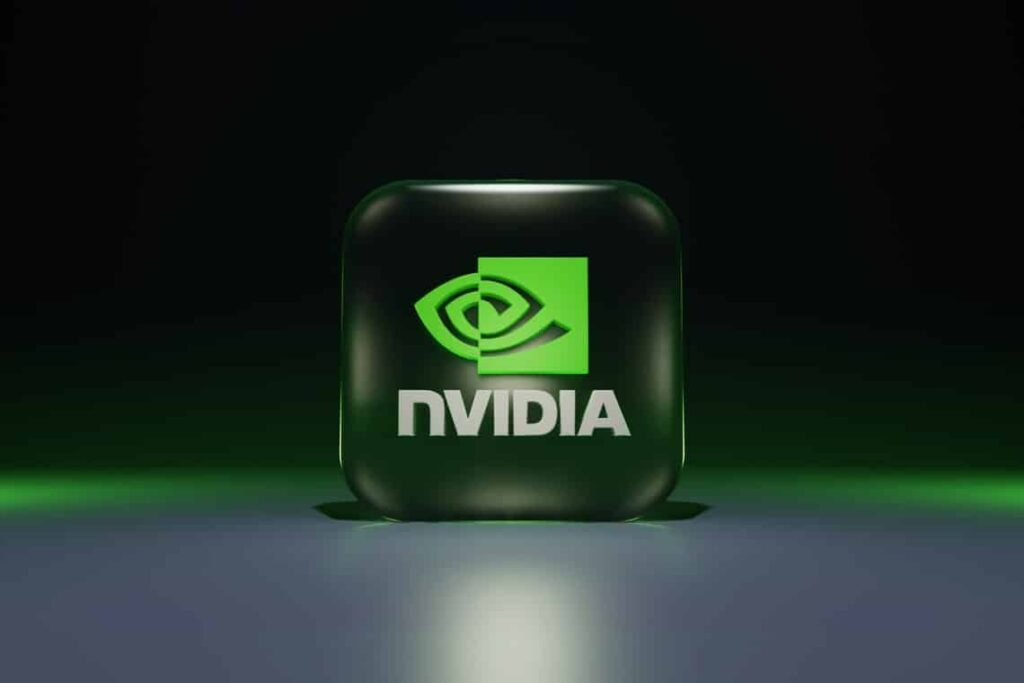
$NVDA, is now up 245,000% since it went public.📈
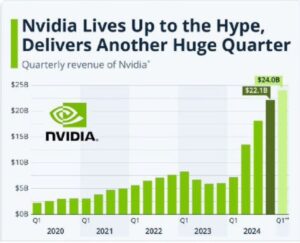
If you had invested $100,000 in $NVDA in 1999, you'd now be sitting on a staggering $245 million.💰
That's right, Nvidia's market cap now dwarfs Walmart's by a factor of 5 and Netflix's by 9!🤑
Top 5 Crypto Coins in 2024

Predicting the top 5 cryptocurrencies for 2024 is speculative and subject to change based on market dynamics, technological advancements, and regulatory developments. However, based on current trends and the potential for continued growth and innovation, here are five cryptocurrencies that could potentially perform well in 2024:
1) Bitcoin (BTC):
As the first and most well-known cryptocurrency, Bitcoin is likely to maintain its position as a leading digital asset. Its limited supply, institutional adoption, and widespread recognition as a store of value could contribute to its continued dominance in the market.
2) Ethereum (ETH):
Ethereum’s smart contract functionality and the growing ecosystem of decentralized applications (DApps) built on its blockchain make it a strong contender. With the transition to Ethereum 2.0, which aims to improve scalability and security, ETH could see increased utility and demand.
3) Cardano (ADA):
Cardano’s focus on scalability, interoperability, and sustainability through its proof-of-stake consensus mechanism could position it as a top player in the cryptocurrency space. Its emphasis on academic research and peer-reviewed development could also enhance its credibility.
4) Polkadot (DOT):
Polkadot’s innovative multi-chain architecture, designed to facilitate interoperability between different blockchains, has garnered significant attention. As the Polkadot ecosystem matures and more projects build on its platform, DOT could see substantial growth.
5) Solana (SOL):
Solana has gained traction due to its high throughput and low transaction costs, making it suitable for decentralized finance (DeFi) and other scalable applications. Its growing ecosystem and developer-friendly infrastructure could contribute to its rise in prominence.
Remember, investing in cryptocurrencies carries inherent risks, and it’s essential to conduct thorough research and consider your risk tolerance before making any investment decisions. Additionally, market conditions can change rapidly, so it’s crucial to stay informed about developments in the cryptocurrency space.

